
As a sequel to the successful 1939 New York World’s Fair, the second World’s Fair opened on April 22, 1964, and its theme was “Peace Through Understanding”. 650 acres (210 ha) of pavilions, public spaces, and displays from exhibitors around the world.
Countries, cities, corporations, and private groups set up shops to display their ideas. The theme was symbolized by a 12-story-high, stainless-steel model of the earth called the Unisphere, built on the foundation of the Perisphere from the 1939 World’s Fair.
The fair is noted as a showcase of mid-20th-century American culture and technology. The nascent Space Age, with its vista of promise, was well represented.
More than 51 million people attended the fair, though fewer than the hoped-for 70 million. It remains a touchstone for many American Baby Boomers who visited the optimistic exposition as children, before the turbulent years of the Vietnam War and many cultural changes.
In many ways, the fair symbolized a grand consumer show covering many products produced in America at the time for transportation, living, and consumer electronic needs in a way that would never be repeated at future world’s fairs in North America.
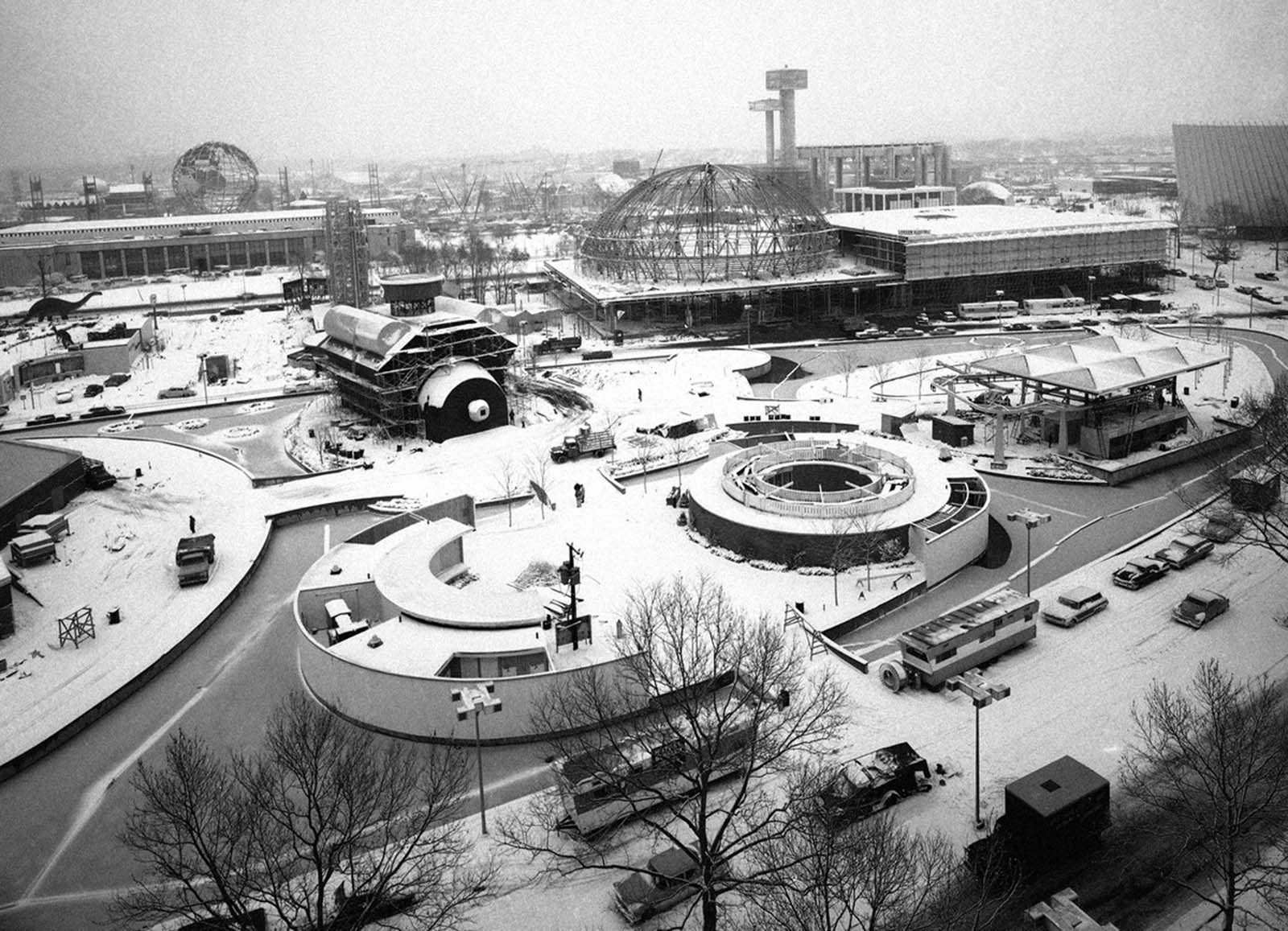
A mantle of snow covers the construction site of the 1964 World’s Fair in New York City on February 19, 1964. In the foreground is the Chrysler Motors Exhibit, backed by the skeleton dome of the Travel and Transportation Pavilion. At the far left is the New York City building, with the fair’s symbol, the Unisphere, behind it.
Many major American manufacturing companies from pen manufacturers, to chemical companies, to computers, to automobiles had a major presence. This fair gave many attendees their first interaction with computer equipment.
Corporations demonstrated the use of mainframe computers, computer terminals with keyboards and CRT displays, teletype machines, punch cards, and telephone modems in an era when computer equipment was kept in back offices away from the public, decades before the Internet and home computers were at everyone’s disposal.
Industries played a major role at the New York World’s Fair of 1939/1940 by hosting huge, elaborate exhibits. Many of them returned to the New York World’s Fair of 1964/1965 with even more elaborate versions of the shows that they had presented 25 years earlier.
The most notable of these was General Motors Corporation whose Futurama proved to be the fair’s most popular exhibit, in which visitors seated in moving chairs glided past elaborately detailed miniature 3D model scenery showing what life might be like in the “near-future”. Nearly 26 million people took the journey into the future during the fair’s two-year run.
The IBM Corporation had a popular pavilion, where a giant 500-seat grandstand called the “People Wall” was pushed by hydraulic rams high up into an ellipsoidal theater designed by Eero Saarinen.
There, a film by Charles and Ray Eames titled Think was shown on fourteen projectors on nine screens, illuminating the workings of computer logic.
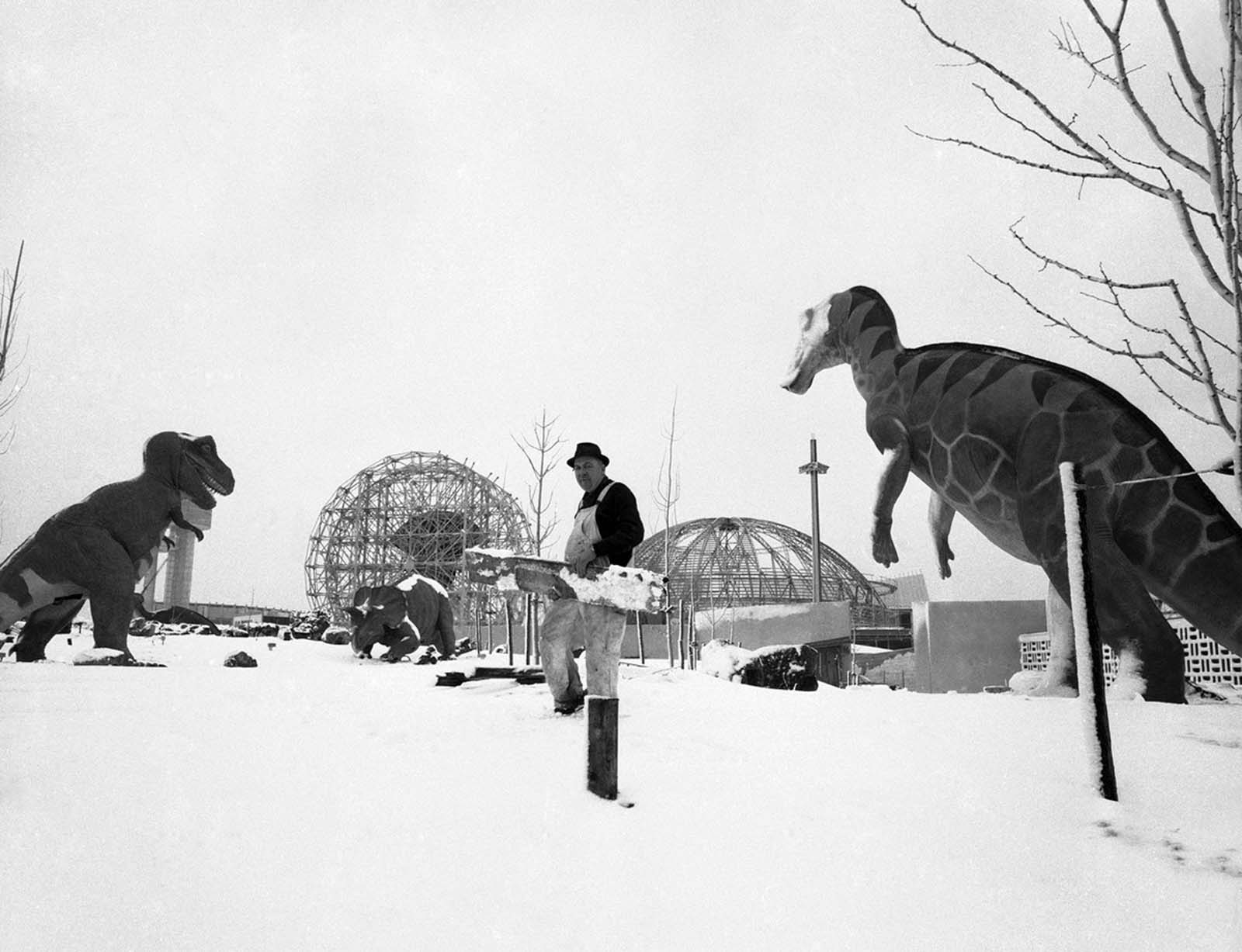
Carpenter Henry Johnson doesn’t seem to concerned about his clutch of prehistoric companions at the Sinclair Oil Exhibit in the World’s Fair grounds, New York City, February 19, 1964. The Ferris wheel-like contraption behind Johnson to the right is the U.S. Rubber Exhibit.
At ground level beneath the theater, visitors could explore Mathematica: A World of Numbers… and Beyond (an exhibit of mathematical models and curiosities) and view the Mathematics Peep Show (a series of short films illustrating basic mathematical concepts).
New York City was left with a much-improved Flushing Meadows–Corona Park following the fair, taking possession of the park from the Fair Corporation in June 1967.
The paths and their names remain almost unchanged from the days of the fair. An ancient Roman column from Jordan still stands near the Unisphere. A stone benchmarking the site of the Vatican pavilion also stands east of the main fountain.
The Unisphere stands at the center of the park as a symbol of “Man’s Achievements on a Shrinking Globe in an Expanding Universe”. The Unisphere has become the iconic sculptural feature of the park, as well as a symbol of the borough of Queens in general. It stands on the site formerly occupied by the Perisphere during the earlier 1939-1940 Fair.
The New York Hall of Science, founded during the 1964 World’s Fair, was one of the country’s first dedicated science museums; it still operates in an expanded facility in its original location at the park’s northern corner.
The Hall of Science anchors a Space Park exhibiting the rockets and vehicles used in America’s early space exploration projects. The Space Park eventually deteriorated due to neglect, but in 2004 the surviving rockets were restored and placed back on display.
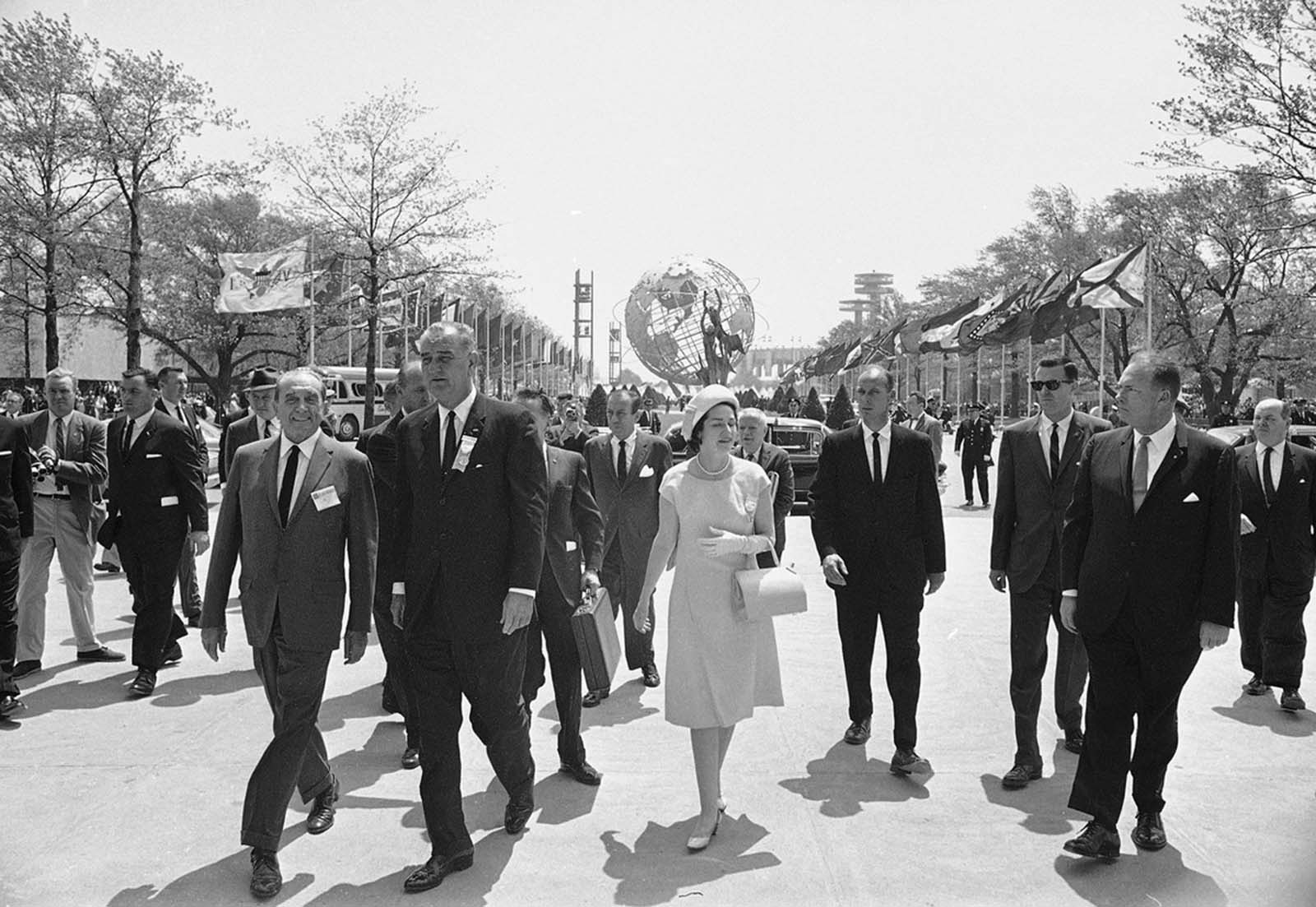
President Lyndon B. Johnson is flanked by Lady Bird Johnson and Norman K. Winston, head of the U.S. Pavilion as he walks through the New York World’s Fair grounds on his way to the U.S. Pavilion on May 9, 1964.
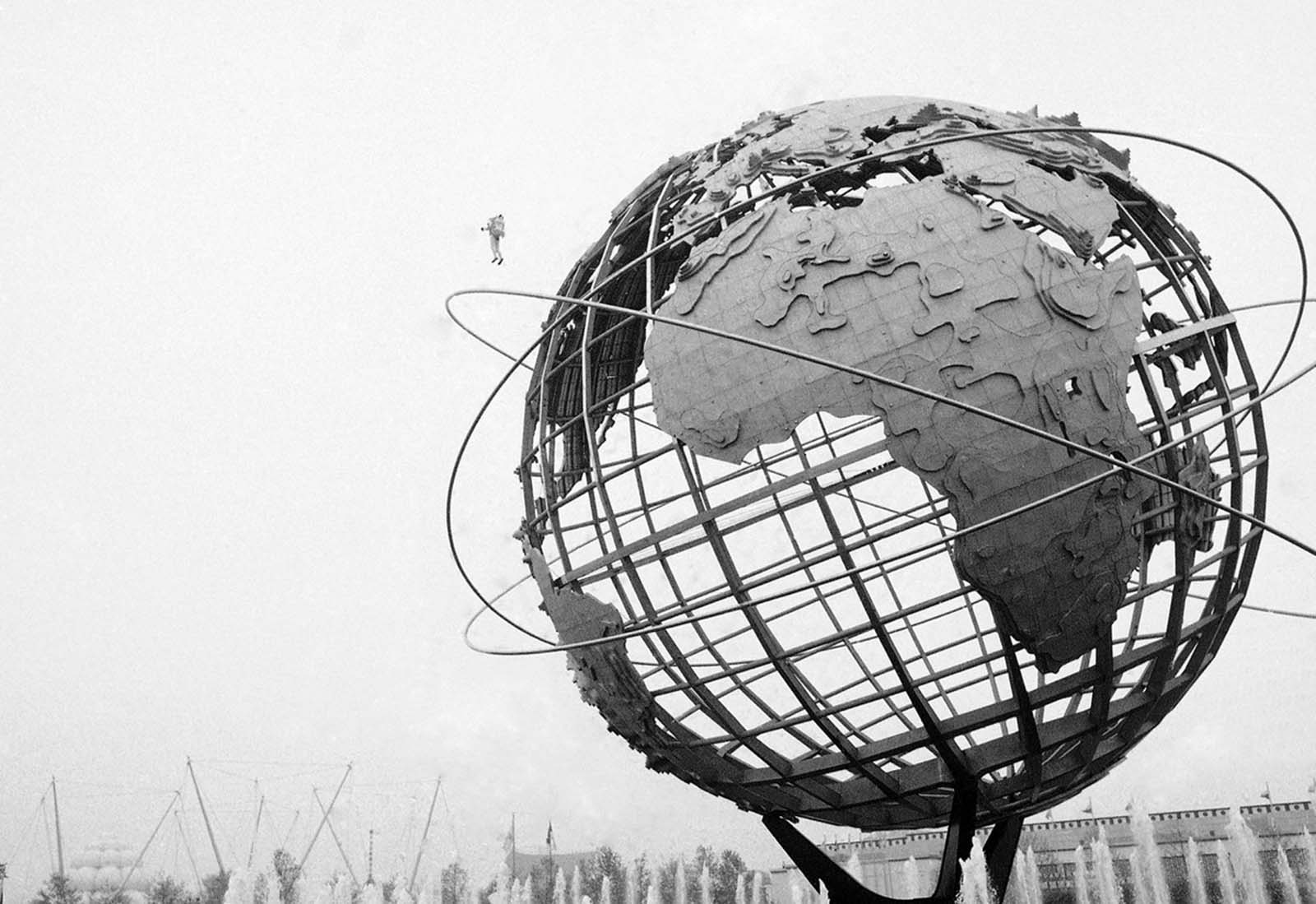
Jetpack over the Unisphere. Performer Robert Courter flies past the Unisphere at the New York World’s Fair on May 13, 1964 wearing a rocket outfit that was originally developed for the U.S. army. The outfit, according to its manufacturer, can fly a distance of 815 feet at speeds of 60 miles an hour. Courter performs in the “Wonder World” musical at the fair.
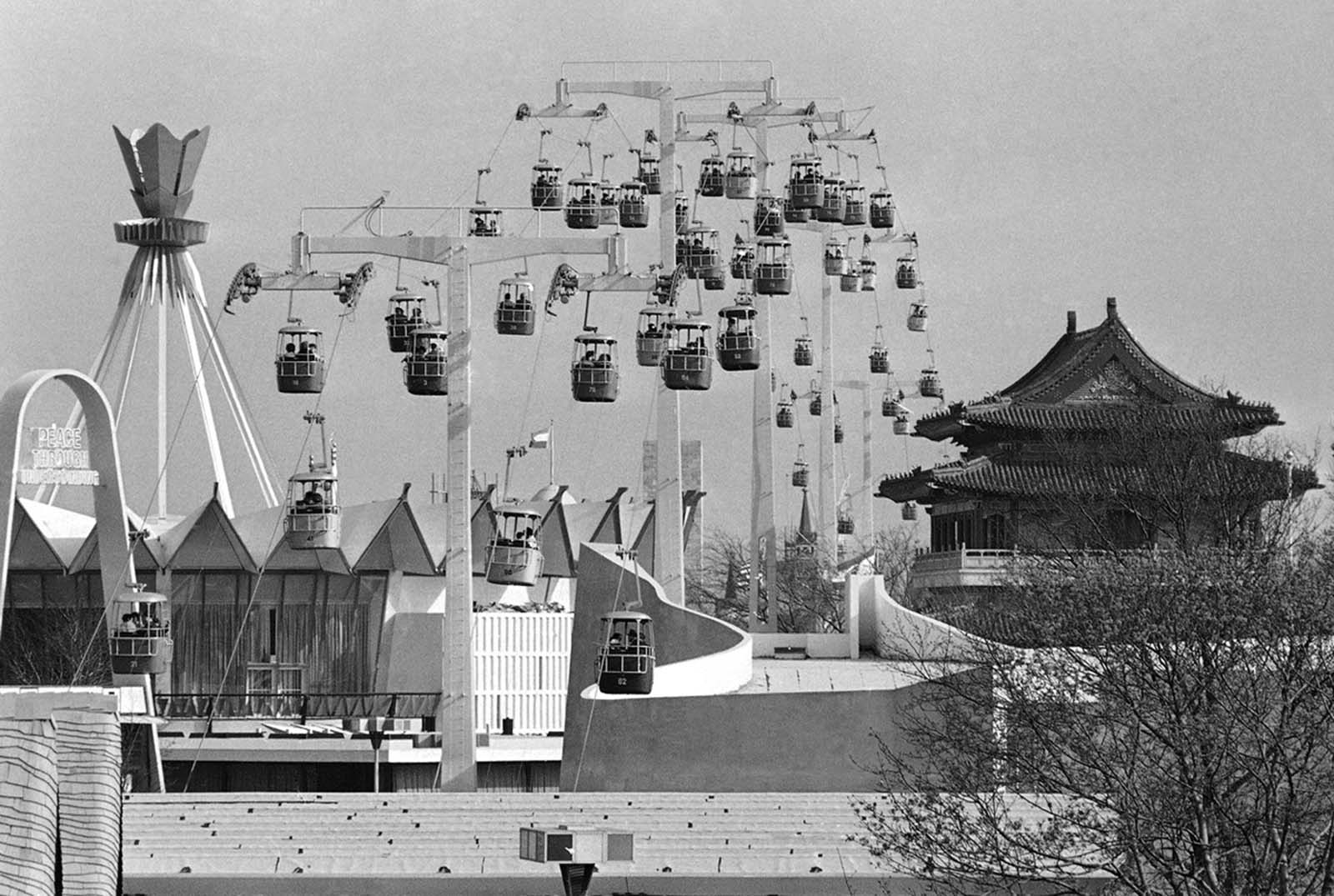
The Swiss sky ride at the New York World’s Fair on April 23, 1964.
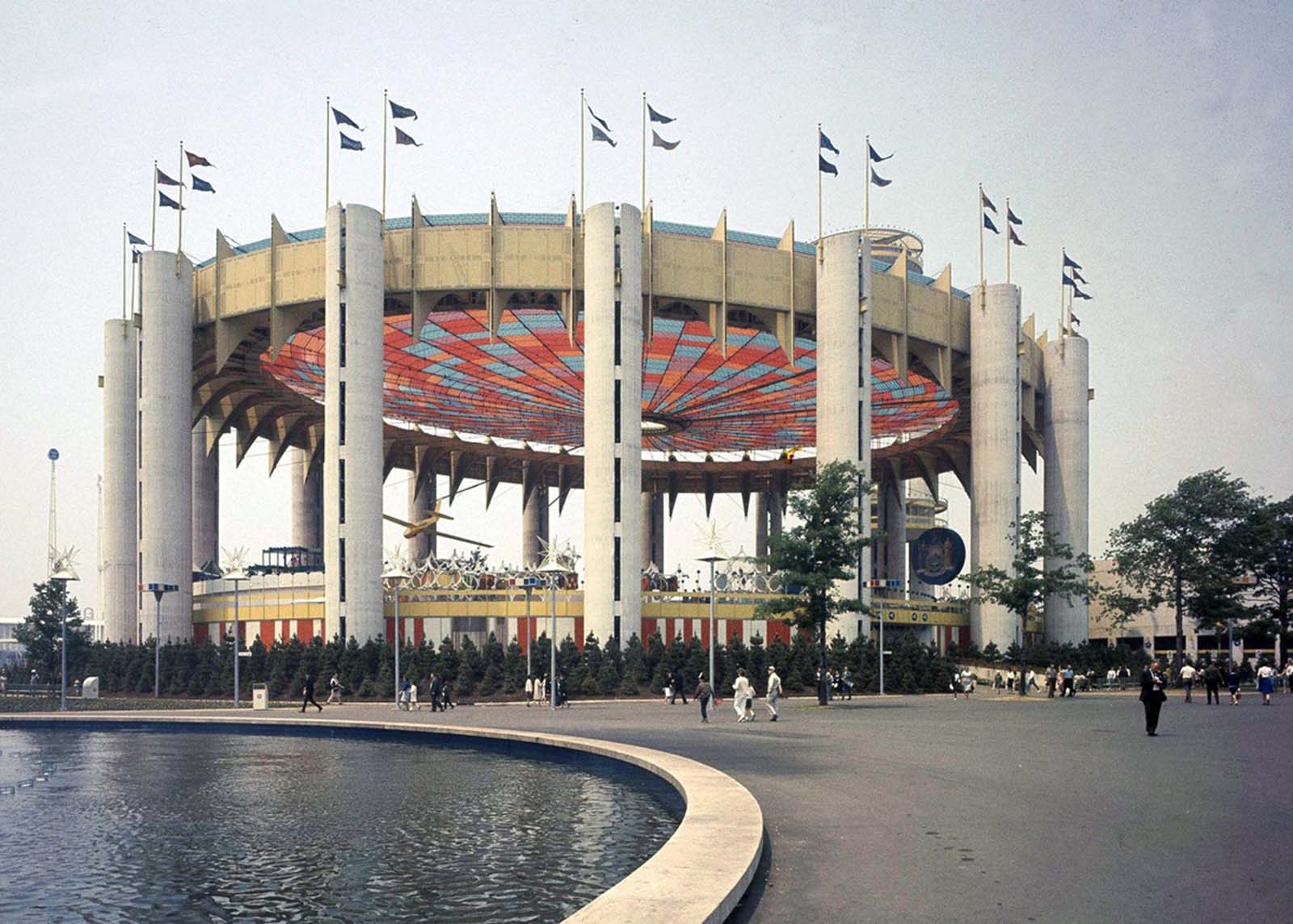
The New York State Pavilion at the New York World’s Fair.
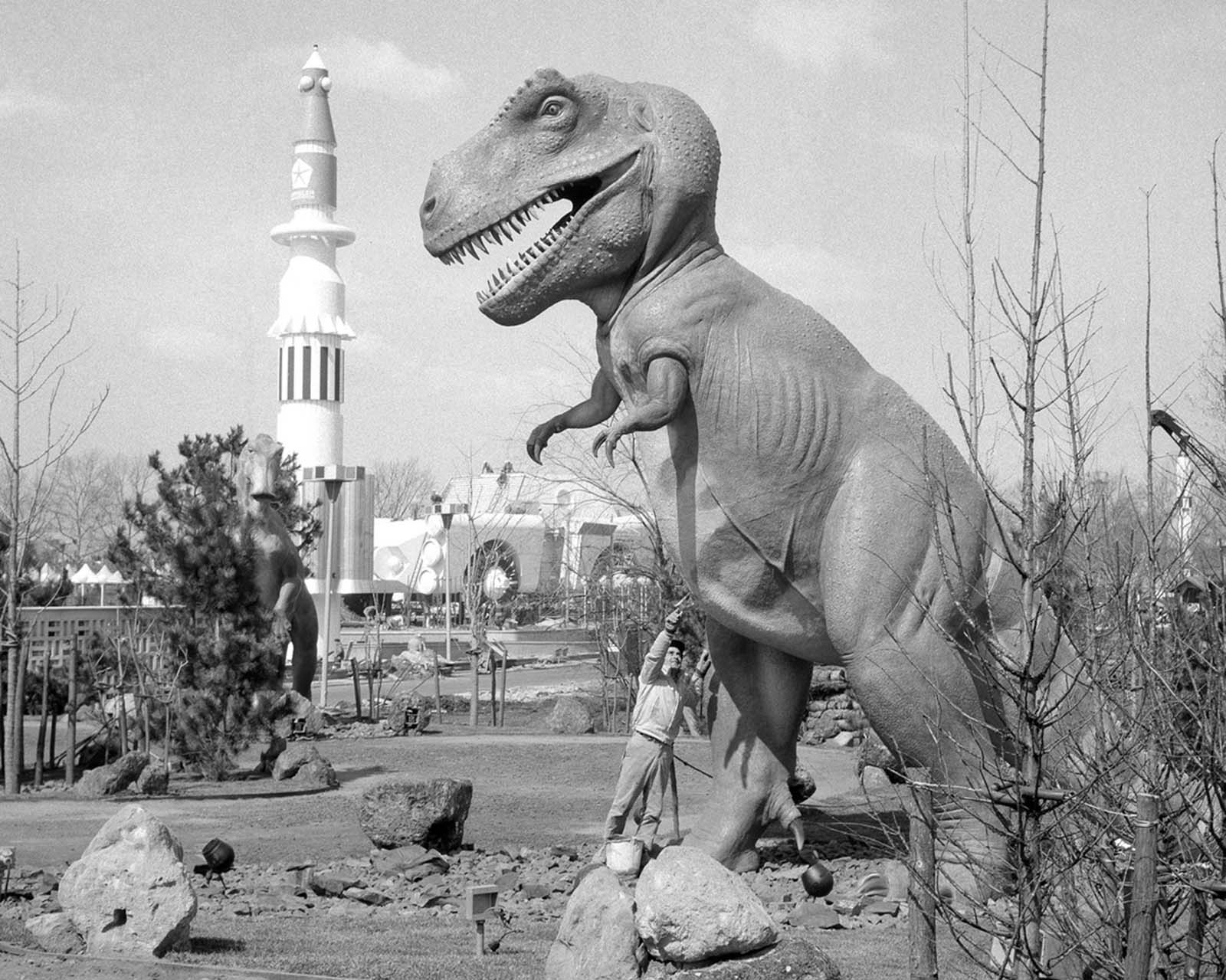
A prehistoric monster stands within sight of a 20th century rocket on April 9, 1964, symbolic of the pageant of world history presented by various exhibits at the New York World’s Fair.
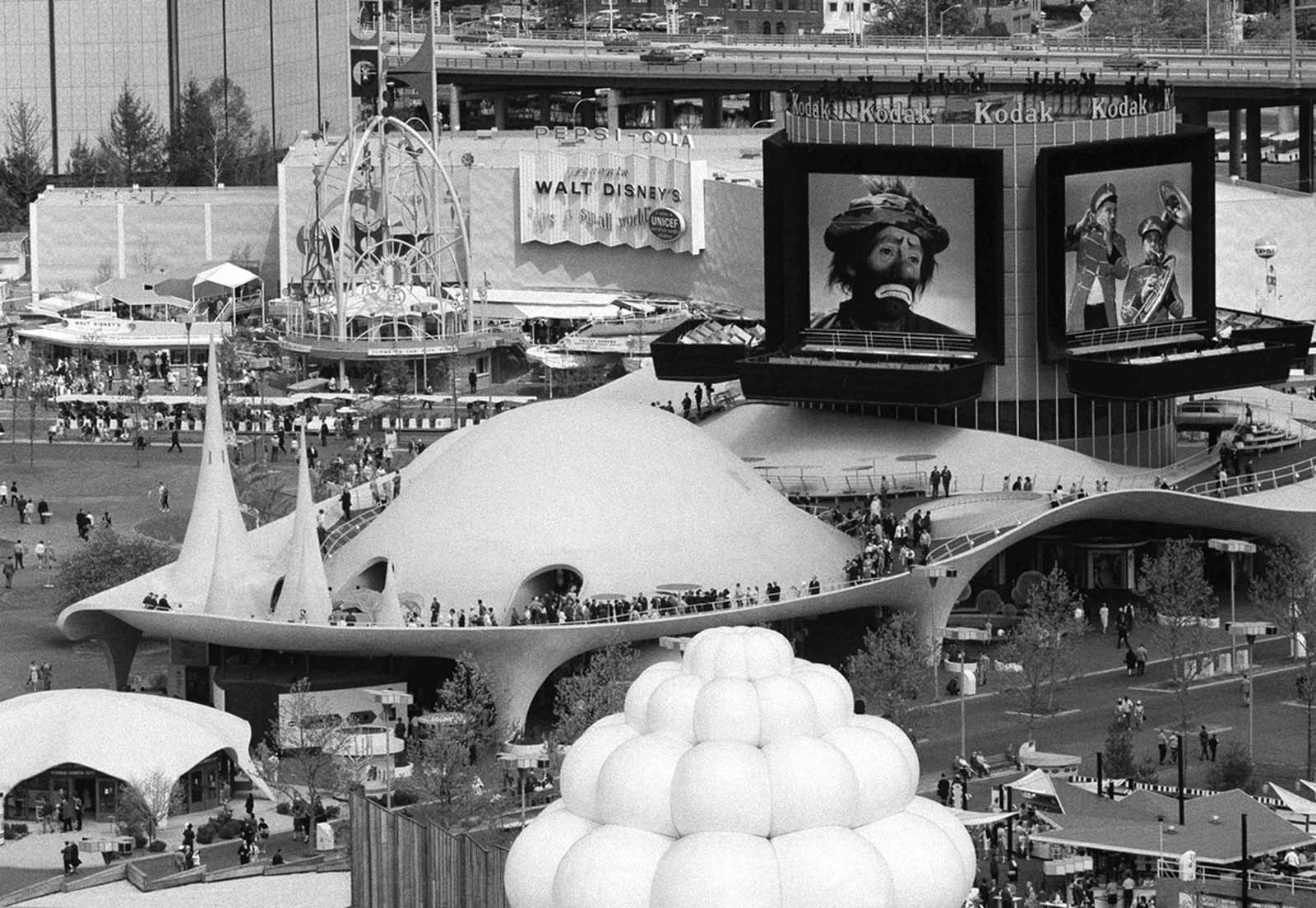
Upon arrival at the fair, most visitors look for the highest vantage point to take in the vast panorama of the grounds in New York, May 12, 1964. While not the highest point, the roof of the Eastern Kodak Pavilion offers views in all directions and is one of the popular stops on the sightseeing tour.
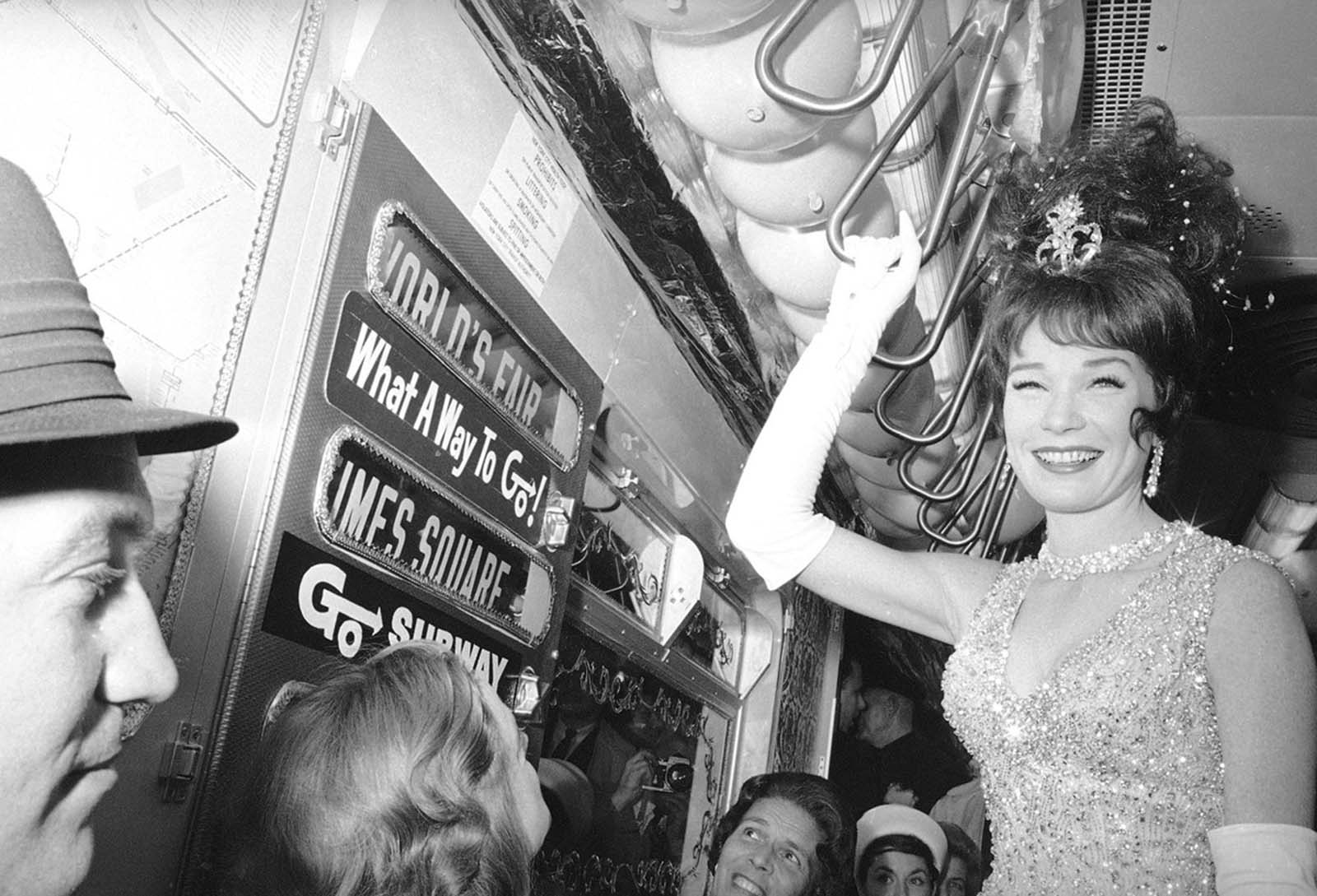
Actress Shirley MacLaine rides the New York subway on her way to the World’s Fair for the premiere of her film “What A Way to Go” on May 13, 1964.
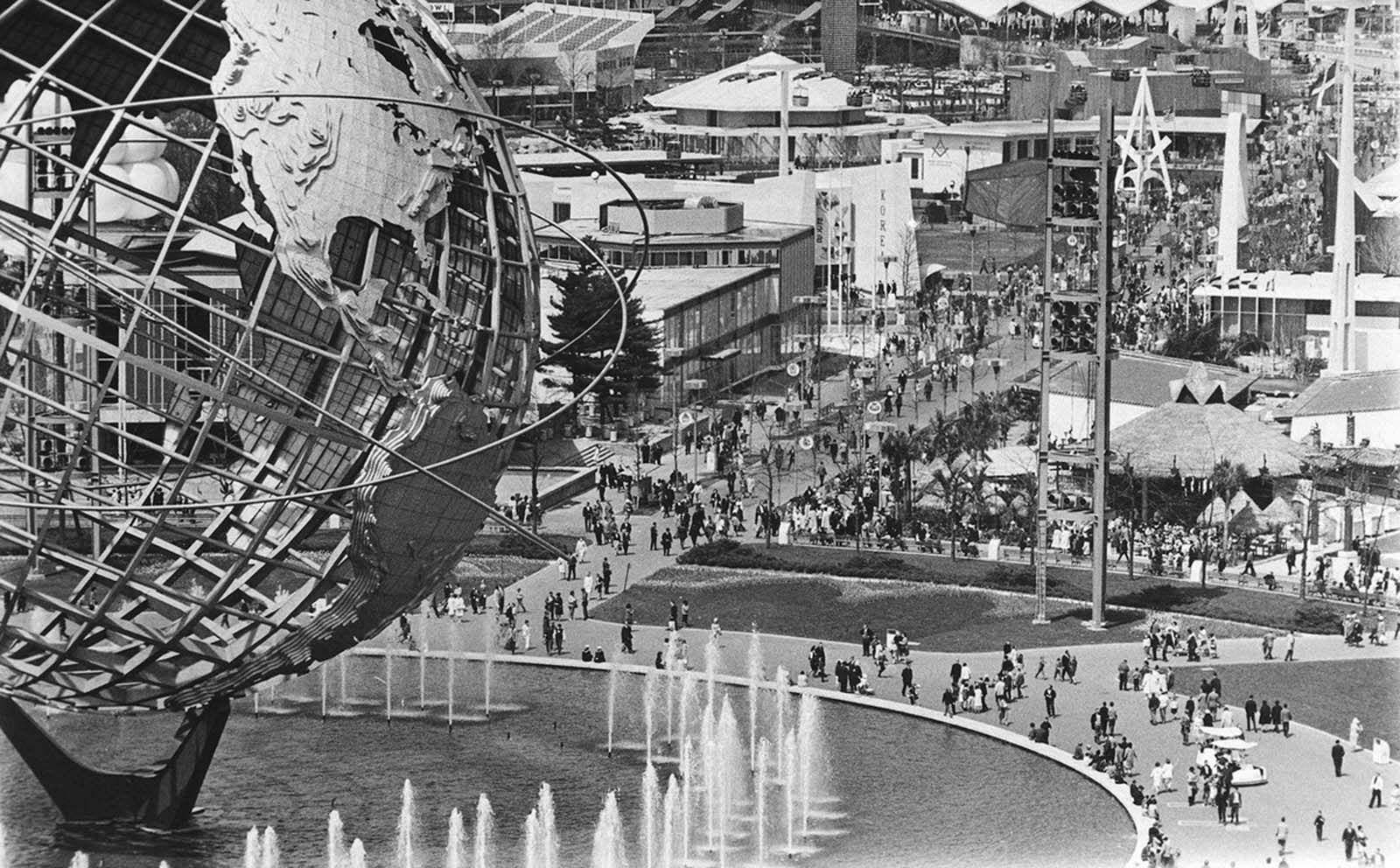
Visitors attend the New York World’s Fair on the first Sunday the fair is open to the public in Flushing, Queens on April 26, 1964.
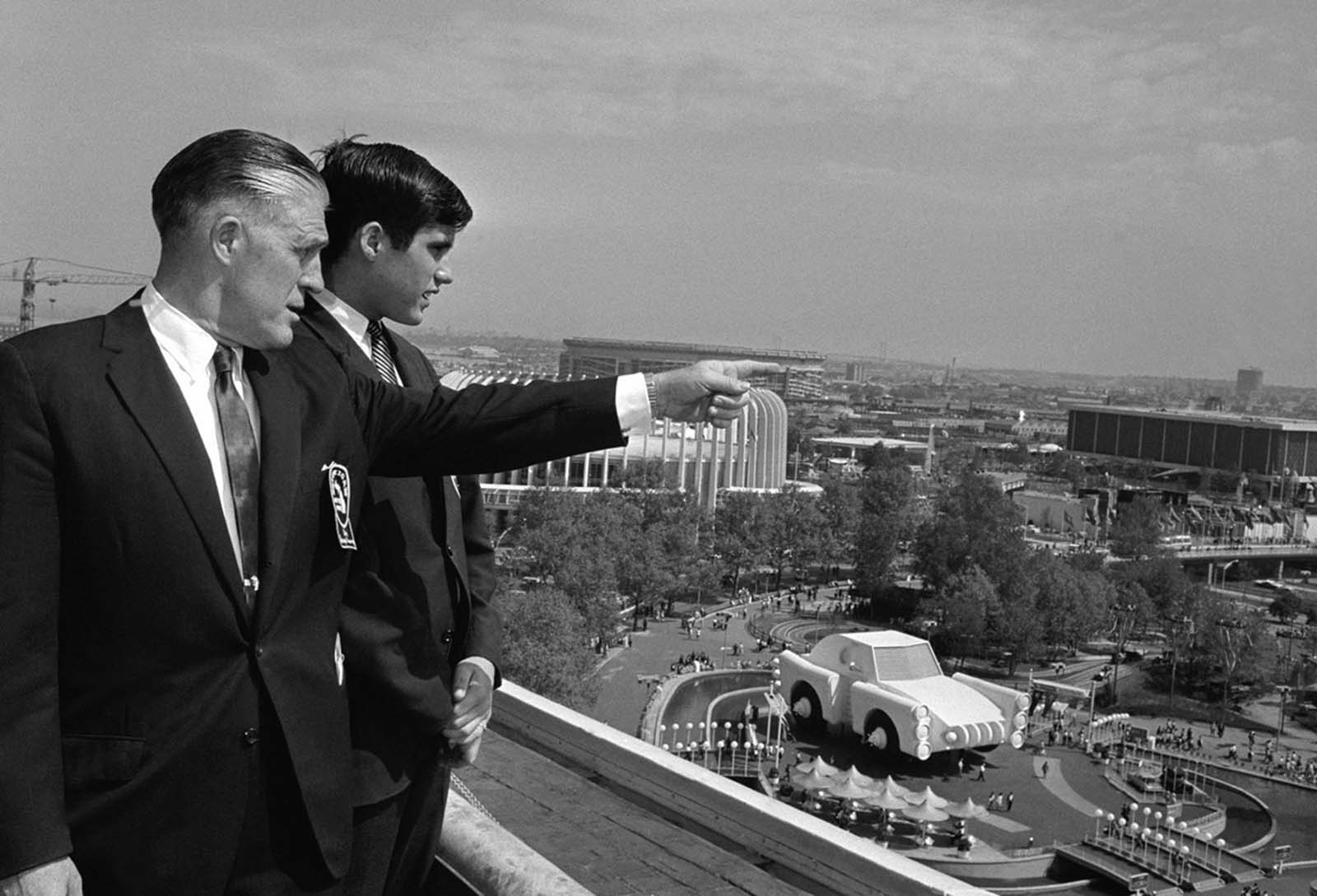
Michigan Governor George Romney and his son, Mitt, look out over the New York World’s Fair grounds from the heliport after attending a Michigan breakfast at the Top of the Fair Restaurant. The governor and a large delegation from Michigan were in attendance for Michigan Day at the fair. At right is part of the Chrysler exhibit and behind them is the Ford exhibit.
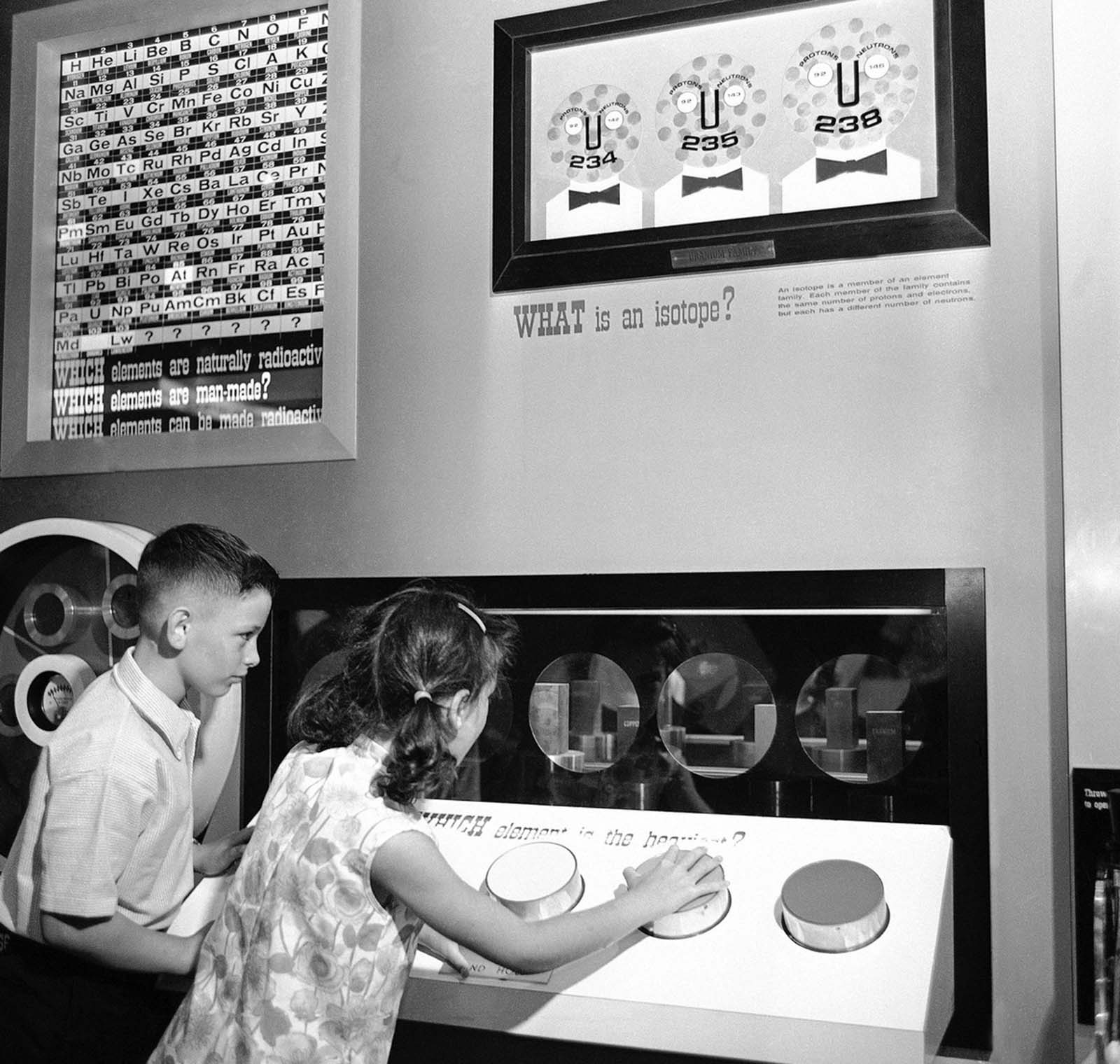
One many displays designed to brief youngsters on the fundamentals of atomic energy at the Atomic Energy Commission’s “Atomsville, U.S.A.”, this one demonstrates relative weight. By pushing the oversize buttons connected to equal size cubes of different elements behind the portholes, the children learn that size and weight of copper, Iron, lead and uranium blocks are deceiving. Uranium is ten times as heavy as the same size block of aluminum. Atomsville was the AEC’s exhibit for children at the World’s Fair Hall of Science pavilion.
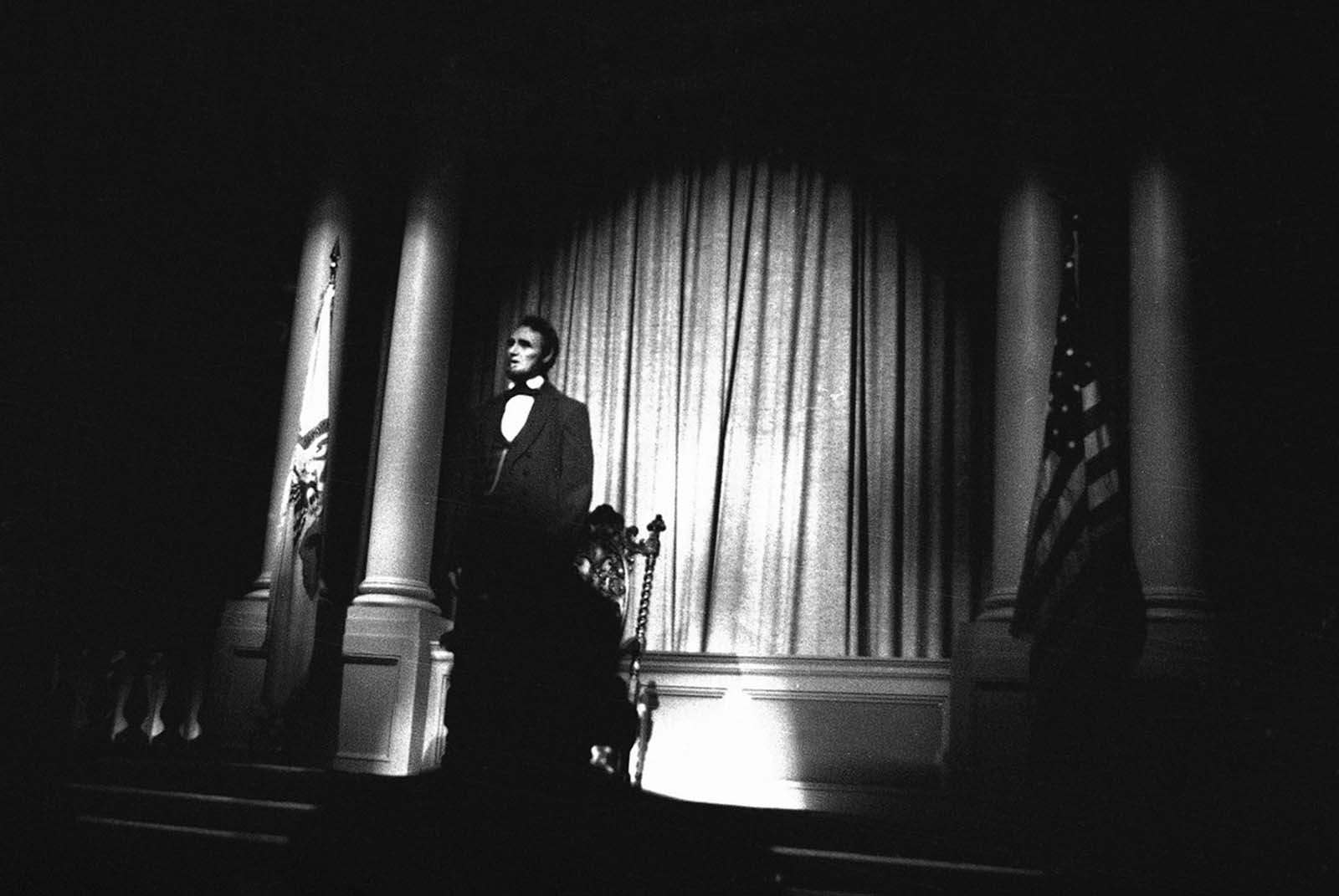
An audio-animatronic Abraham Lincoln, in his familiar dark suit with facial features based on an actual mask of the President rises from a seated position at the start of a nine-minute performance and walks toward the audience at the Illinois Pavilion at the New York World’s Fair, May 15, 1964. The six-foot 4-inch figure was created by Walt Disney.
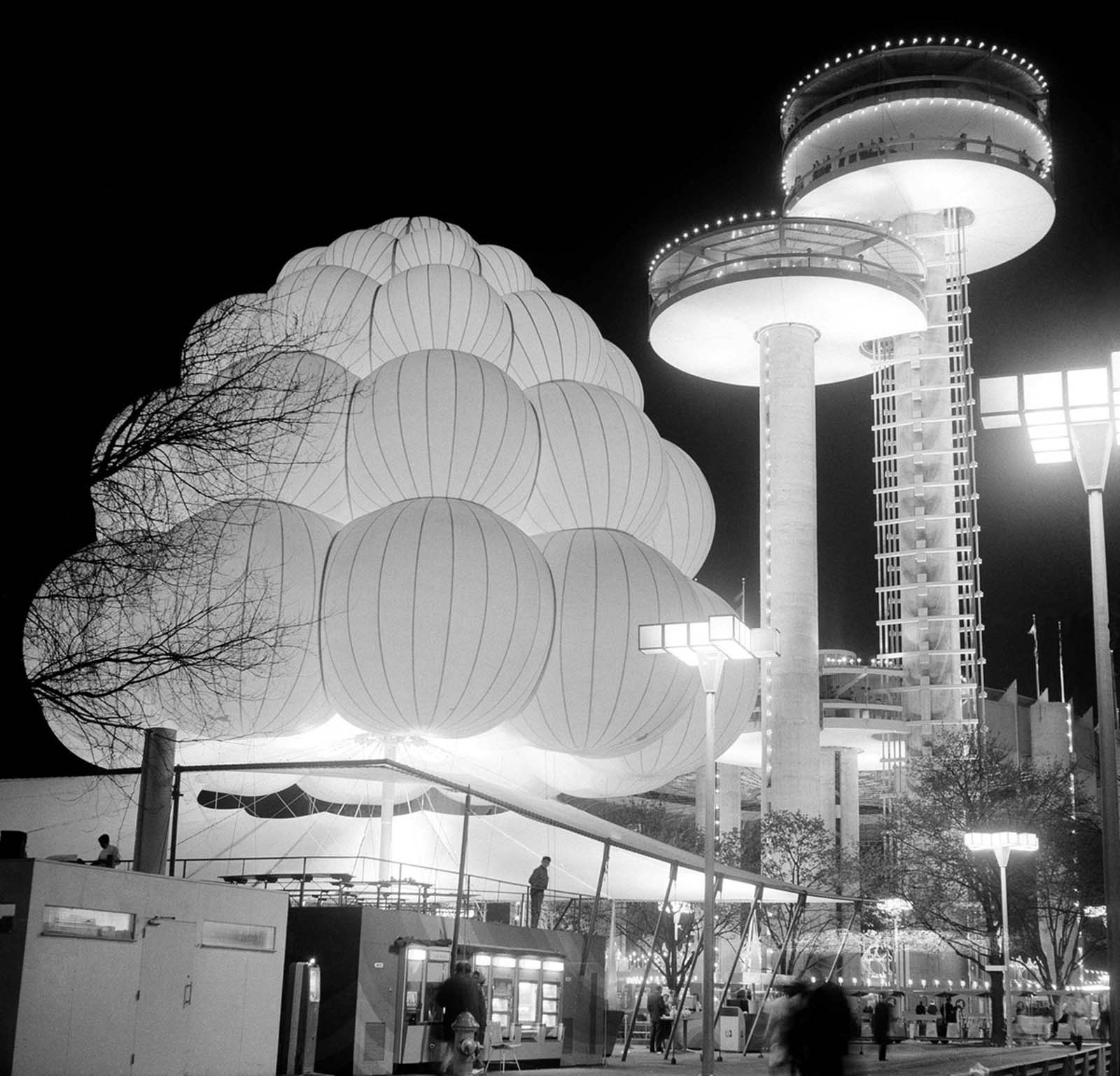
One of the Brass Rail lunch bars at the World’s Fair gives the appearance of a mass of balloons tied together on August 11, 1964. The towers at right are observation platforms, part of the New York State pavilion.
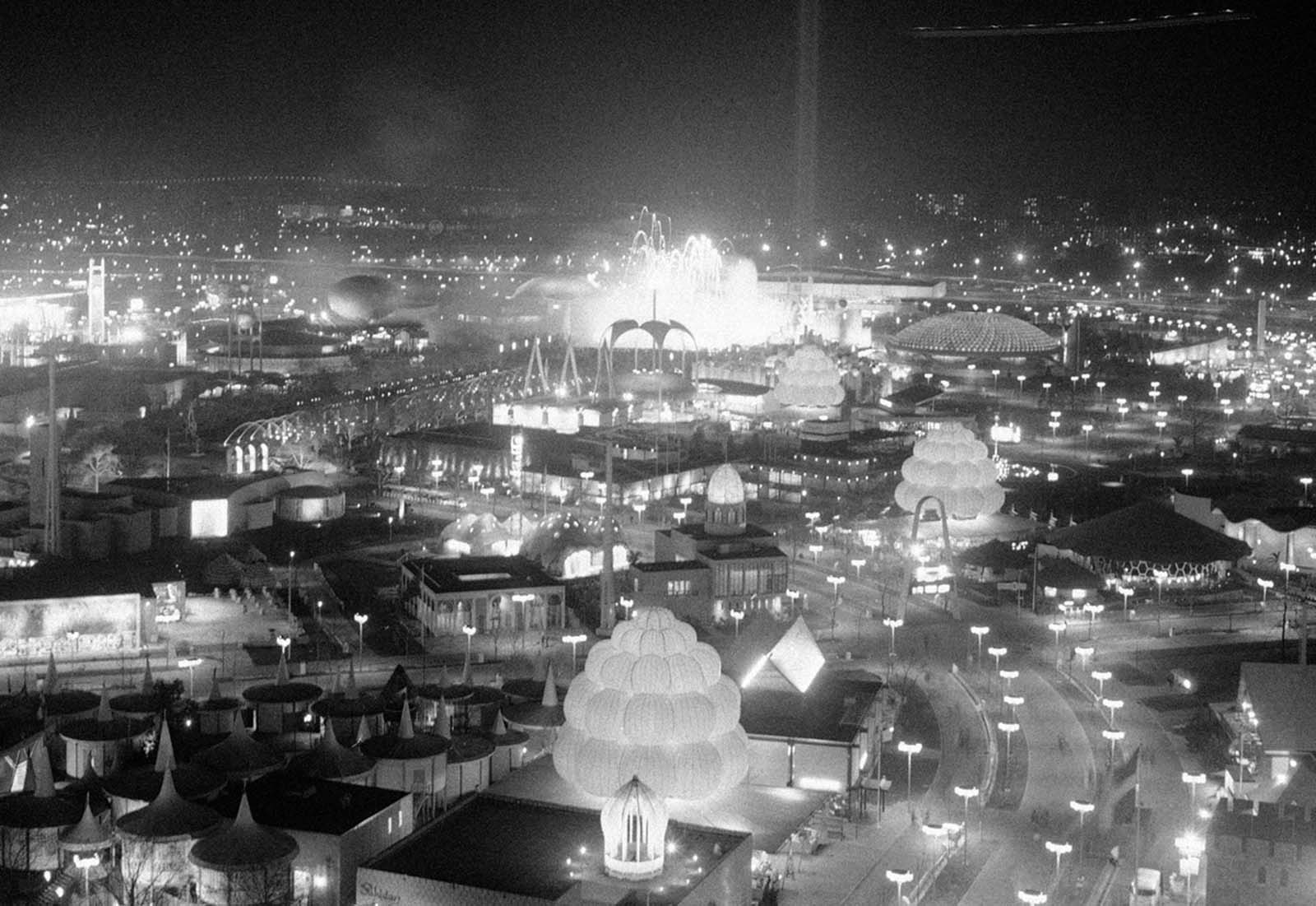
General view of the New York World’s Fair taken from the New York State tower on April 27, 1964.
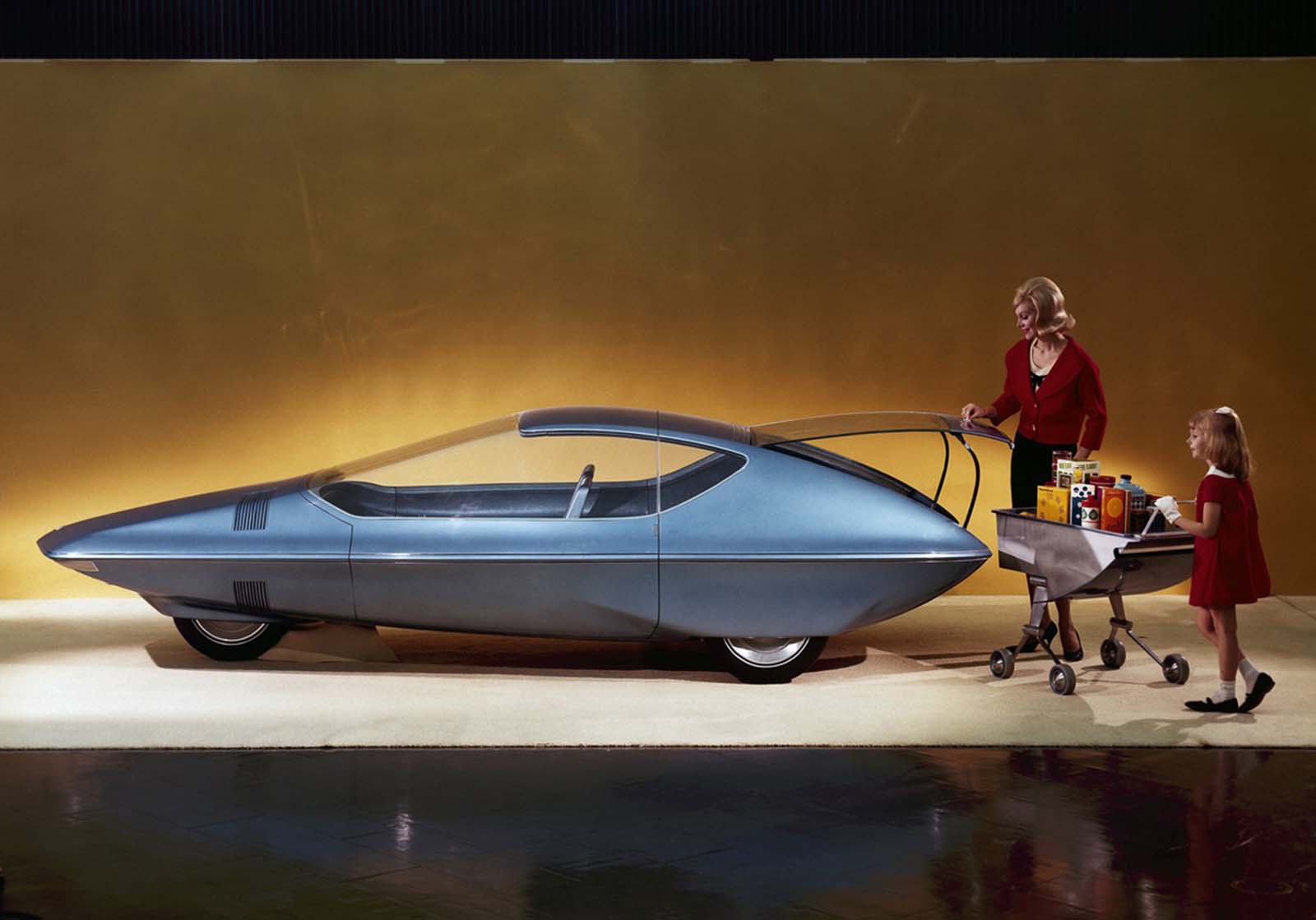
A futuristic grocery shopping trip, envisioned at the General Motors Pavilion at the World’s Fair, New York in 1964.
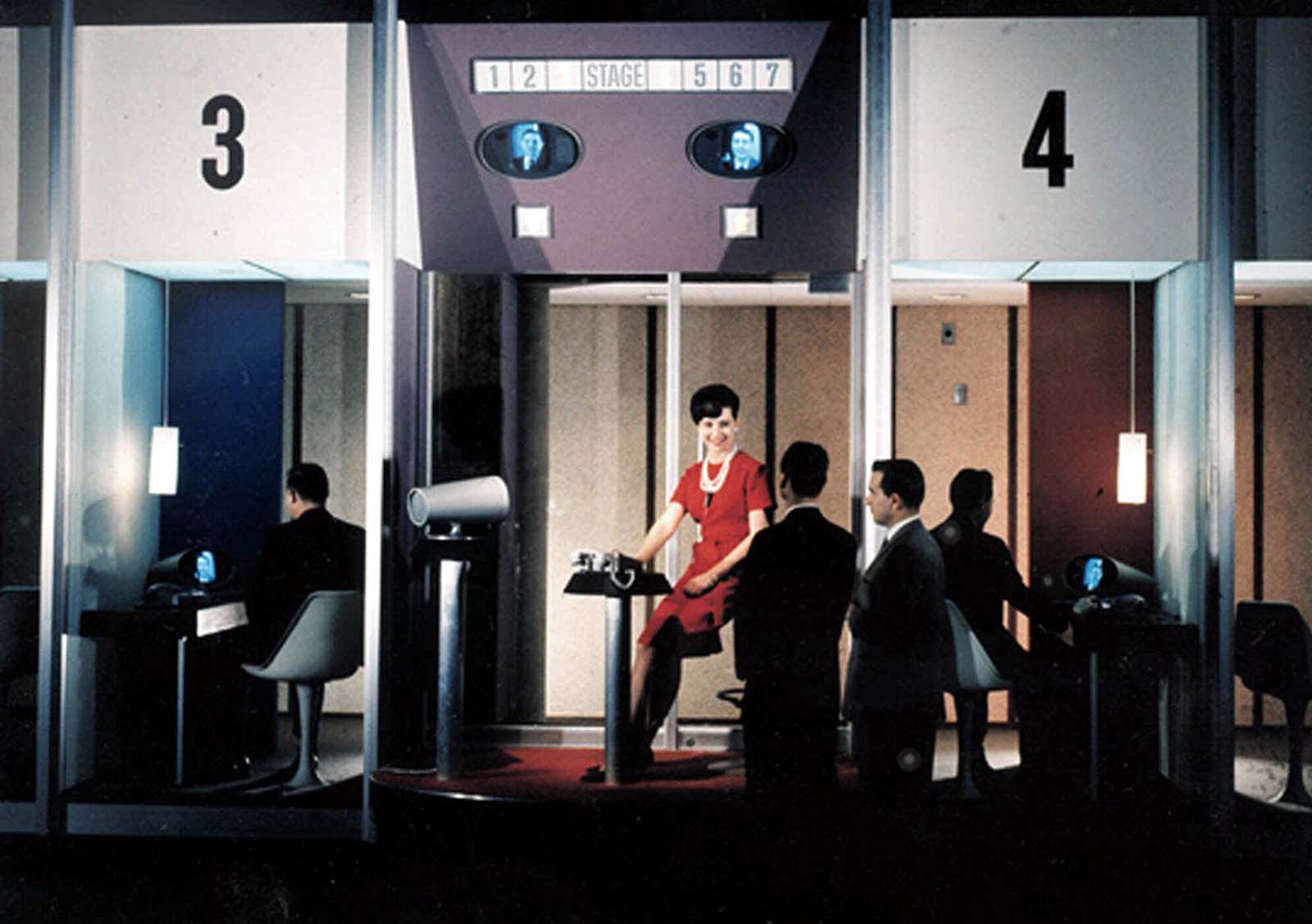
A Picturephone is demonstrated at the AT&T; Pavilion at the 1964 World’s Fair. The fair introduced more than 50 million visitors to a range of technological innovations and predictions for how the future would look.

A future vision of the American Southwest in the Futurama exhibit in the General Motors Pavilion. Crops thrive in soil irrigated by desalted sea water. Machines operated by remote control plant and harvest the crops.
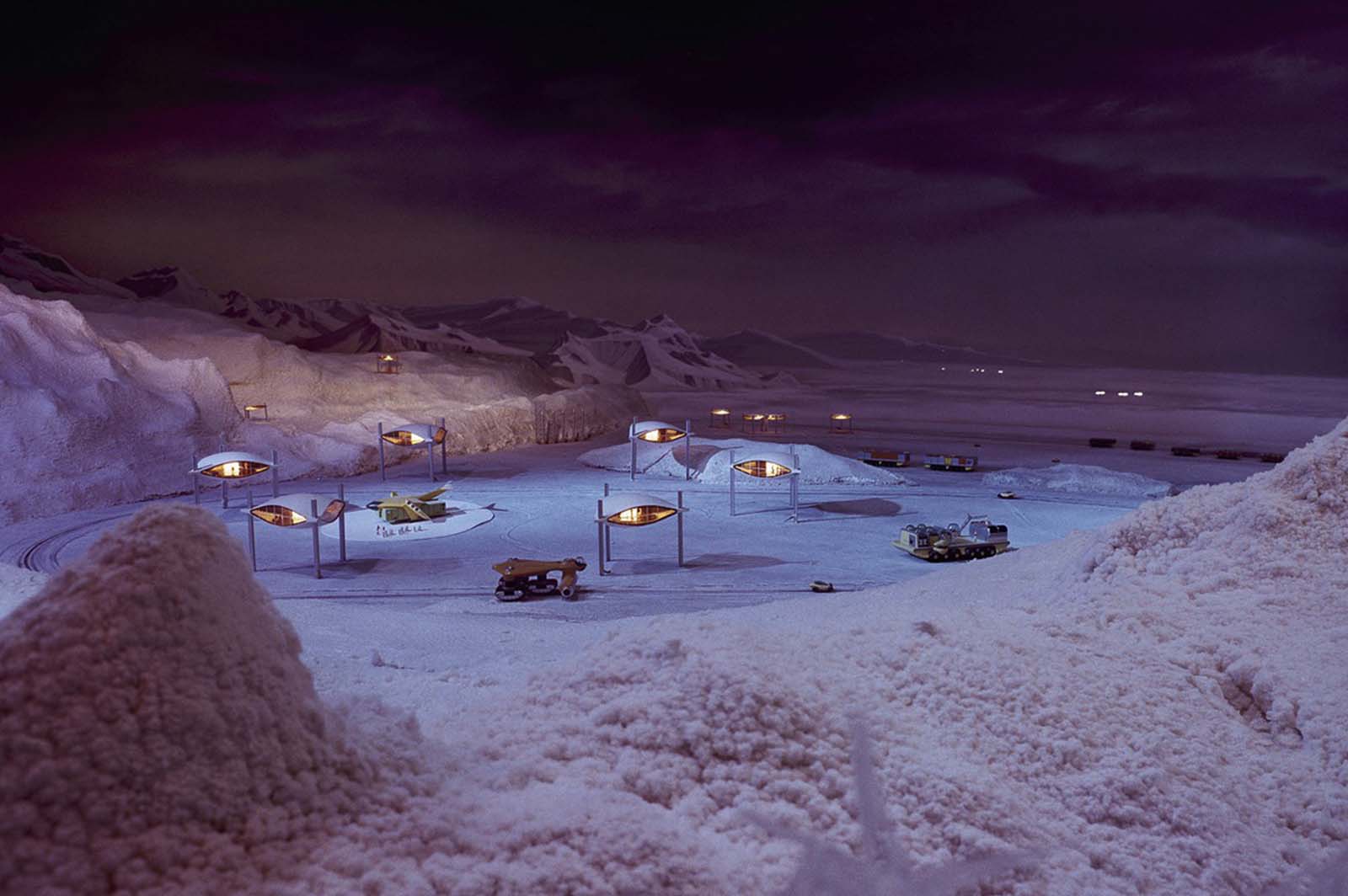
An all-weather port cut deep into the Antarctic ice shelf, part of GM’s Futurama exhibit at the World’s Fair.
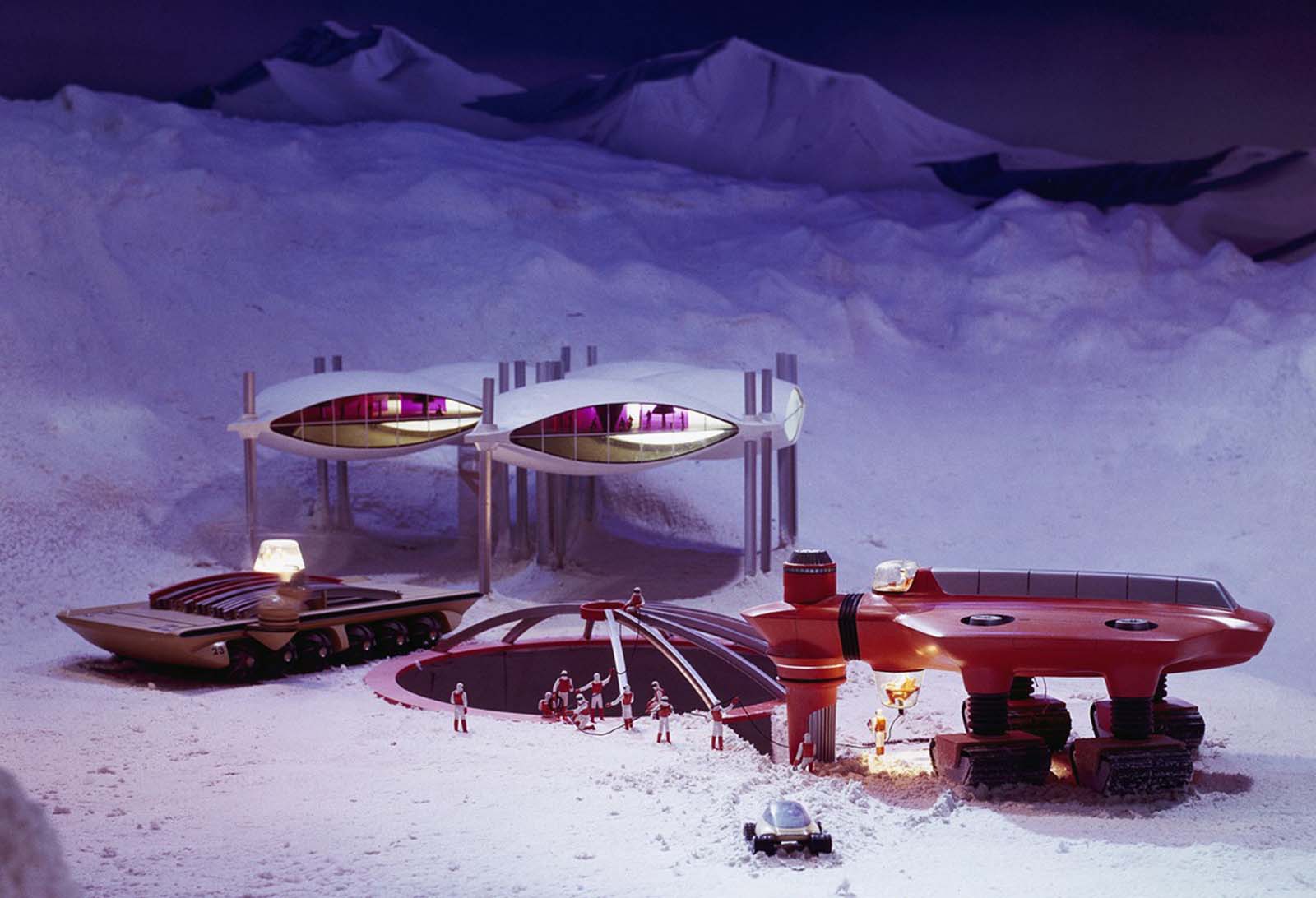
A model of a deep hole cut into Antarctic ice, leading to a weather station, where technicians can prepare forecasts embracing whole continents, part of GM’s Futurama exhibit at the World’s Fair.

An envisioned global weather station, far below the Antarctic ice, part of GM’s Futurama exhibit at the World’s Fair.
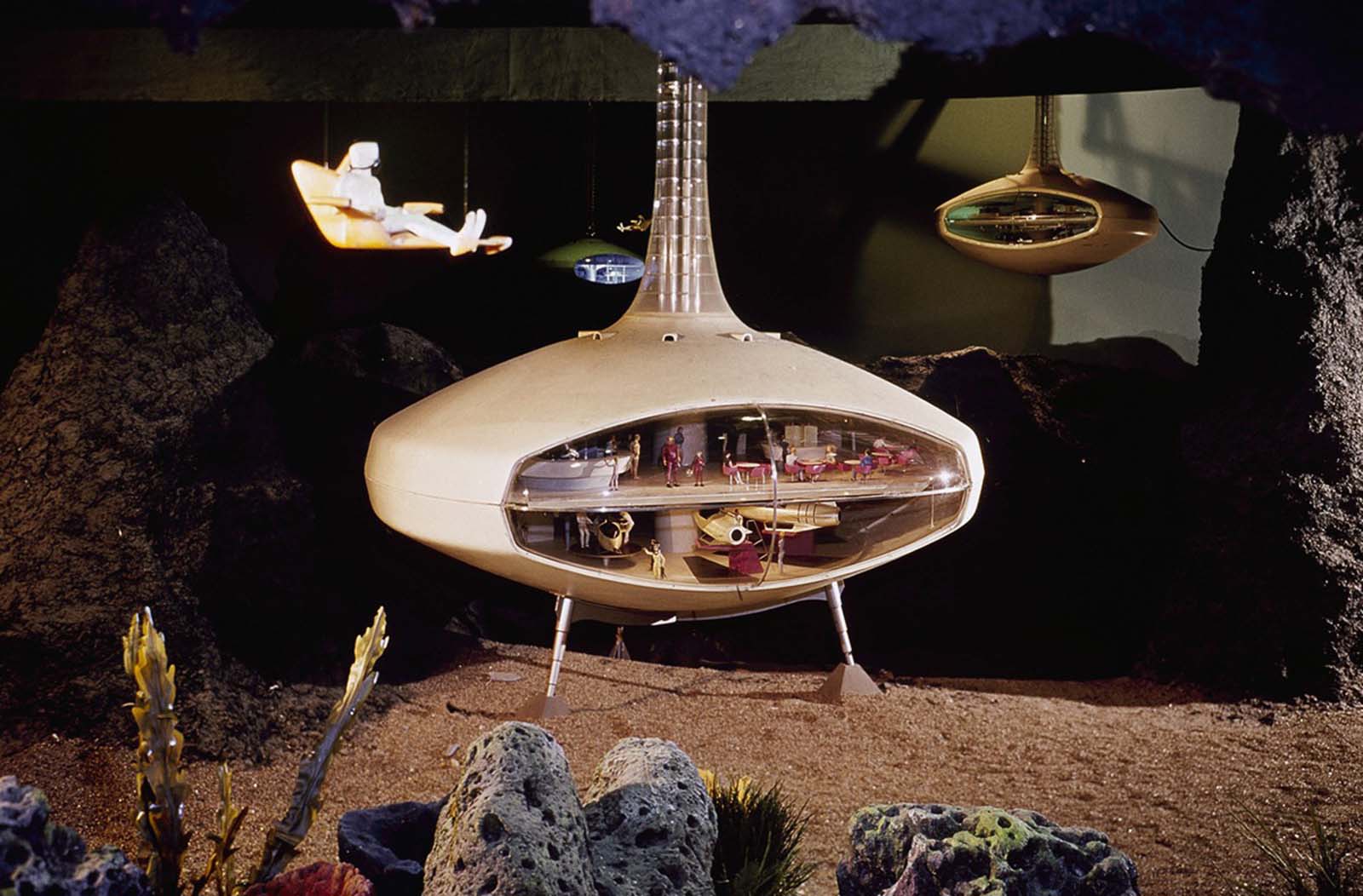
A future life underwater, where the ocean floor is tapped for oil and vacationers relax at a resort beneath the surface, part of GM’s Futurama exhibit at the World’s Fair.

A city of the future offers a dazzling finale to the Futurama exhibit at the New York World’s Fair.
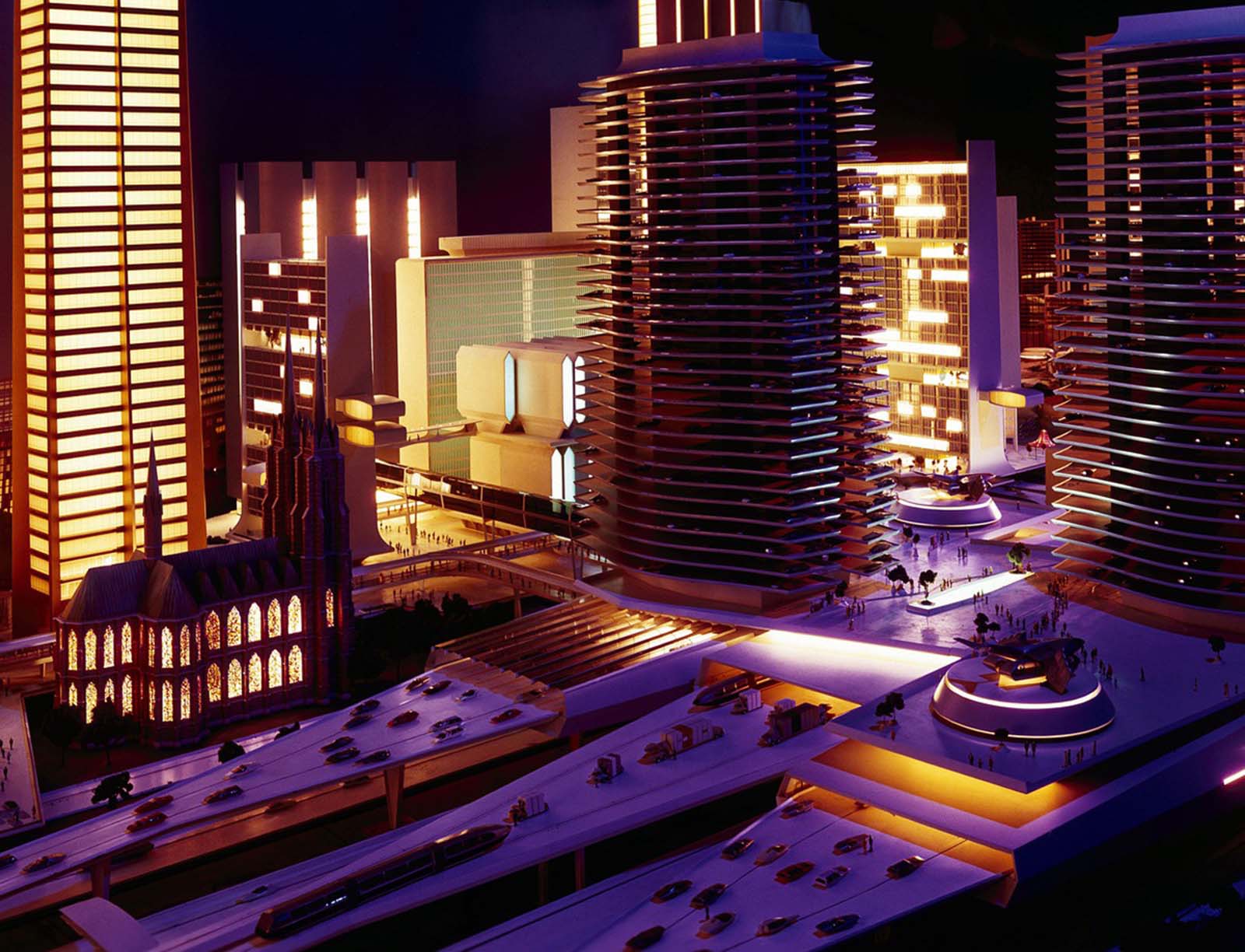
More views of the city of the future, where new and old architecture live side-by-side, part of GM’s Futurama exhibit at the World’s Fair.
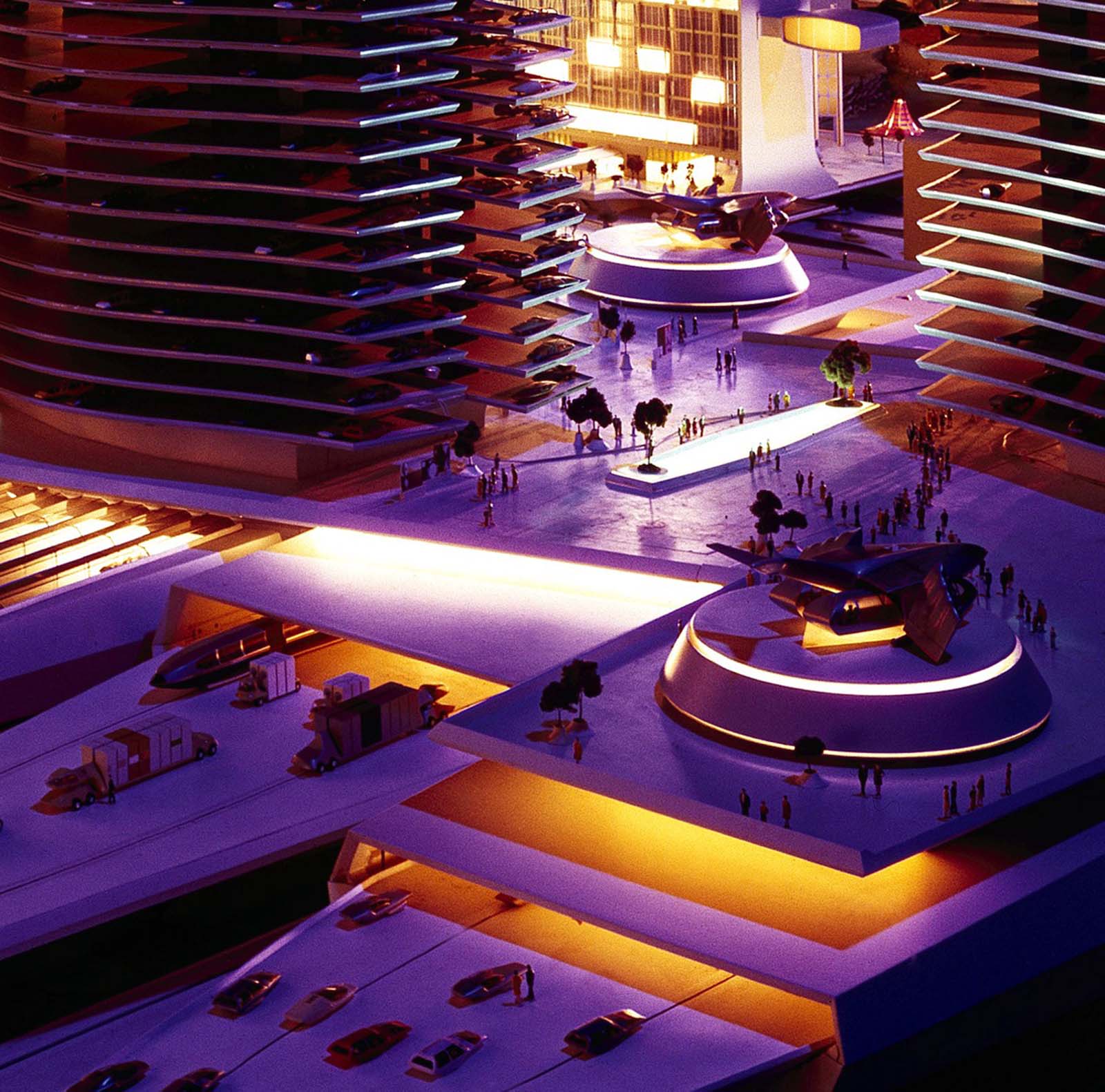
A detail of the previous photo of the city of the future, featuring automated roadways, landing ports for aircraft that can take off and land vertically, and 35-story parking garages, part of GM’s Futurama exhibit at the World’s Fair.
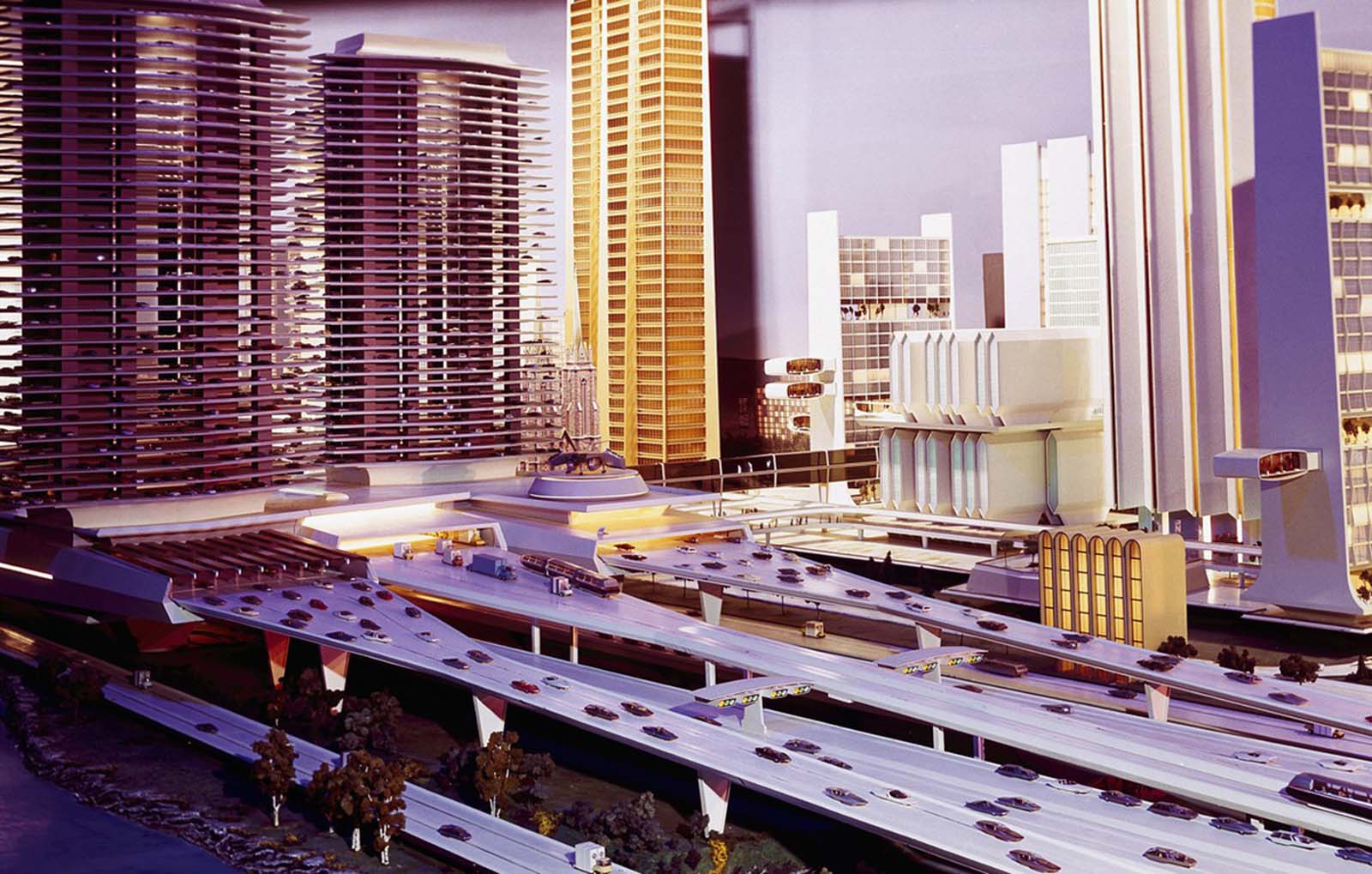
The city of the future, part of GM’s Futurama exhibit at the World’s Fair.
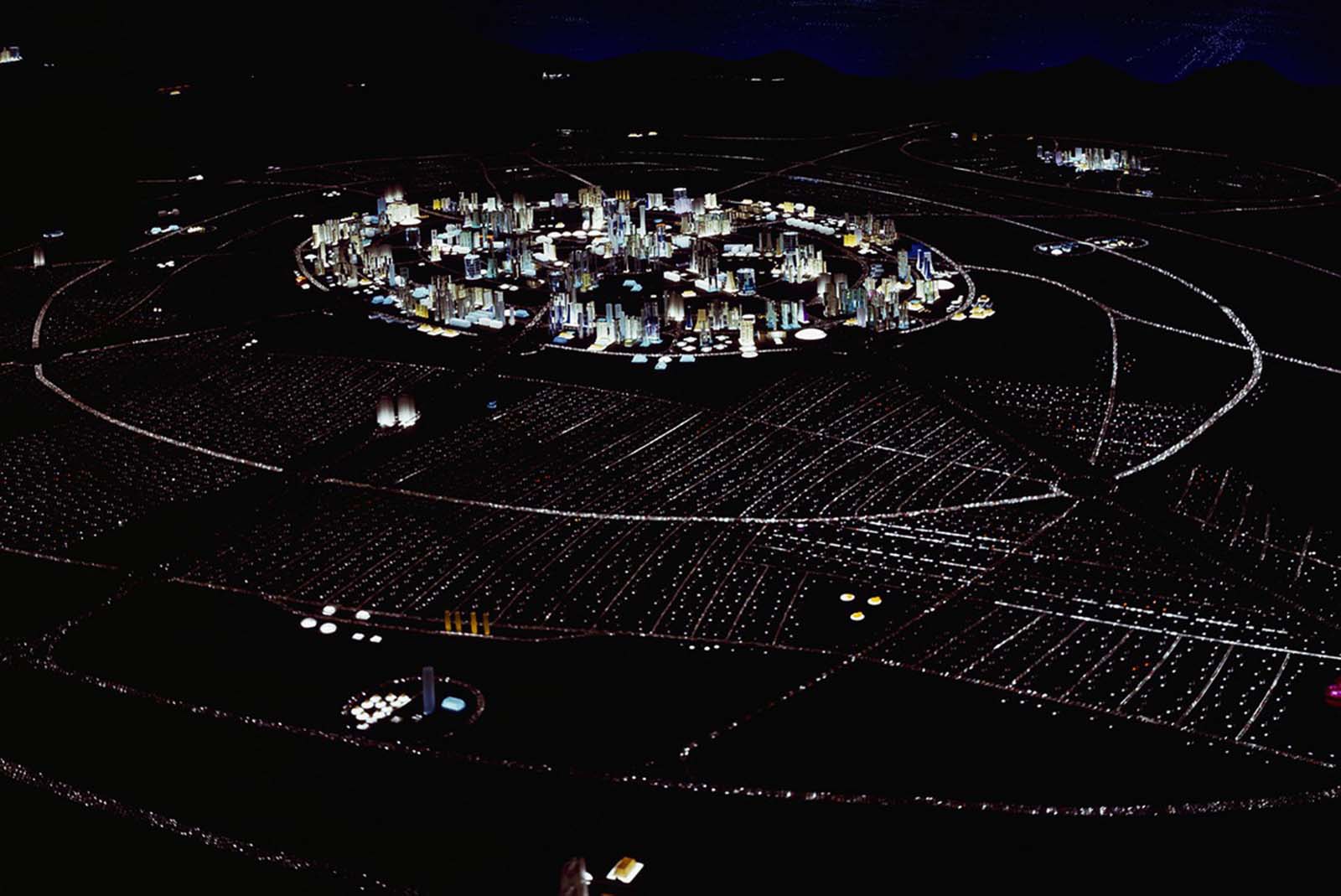
Urban and suburban planning for the future, envisioned in GM’s Futurama exhibit at the World’s Fair.
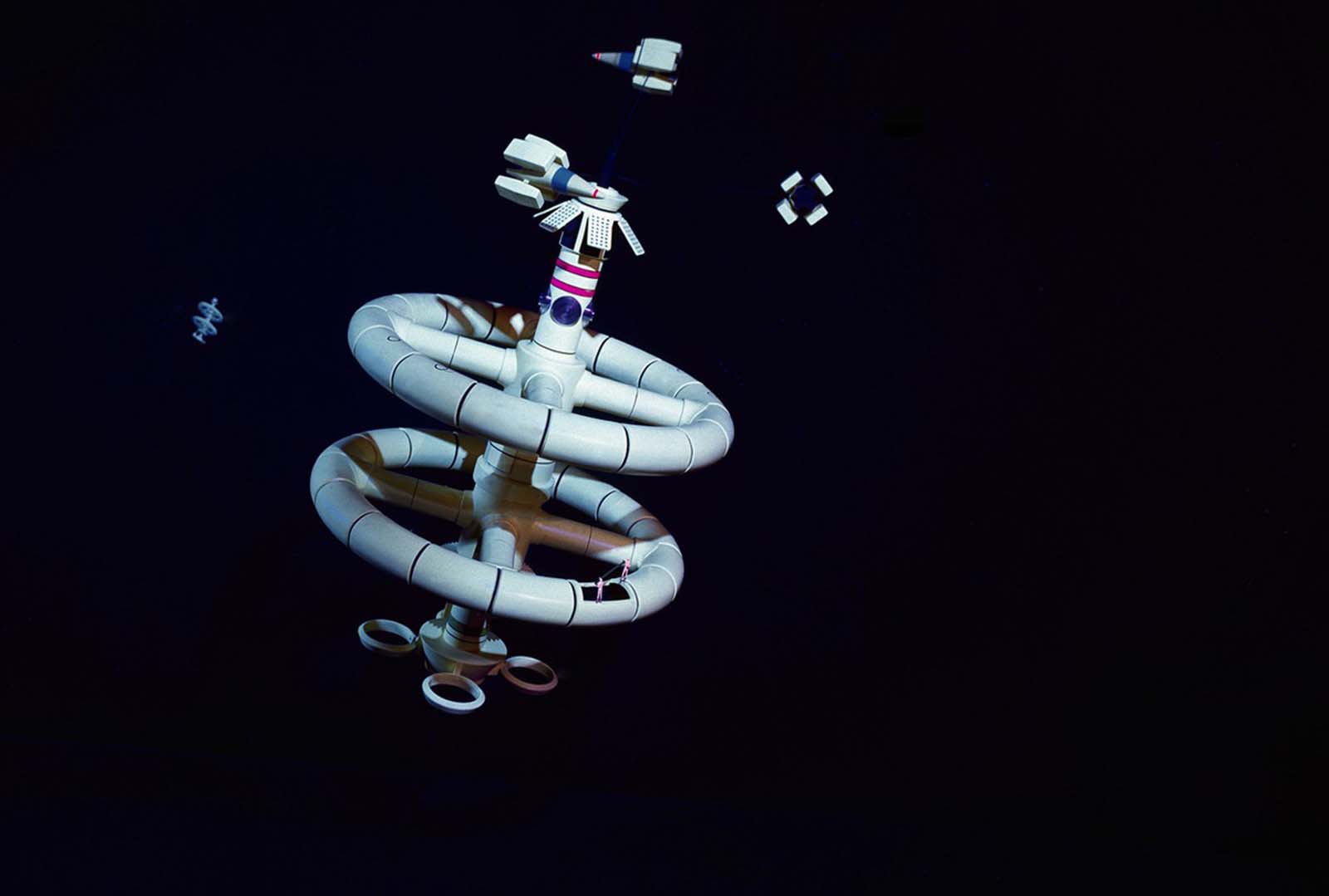
Space stations and spacecraft dot the night sky in GM’s Futurama exhibit at the World’s Fair.
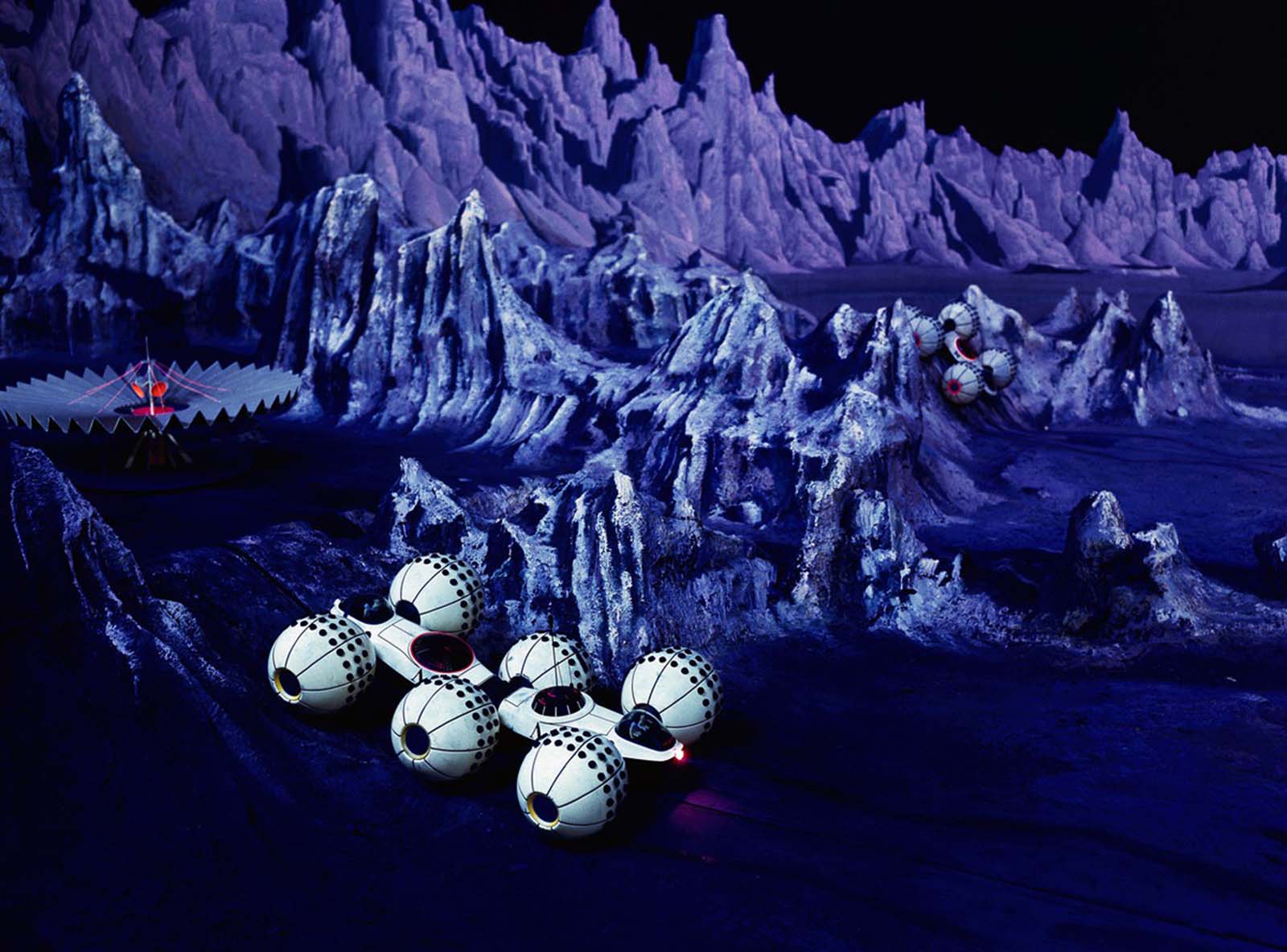
From the official guide book entry on Futurama: “A trip to the moon starts the ride taking the visitor past a scale model whose craters and canyons are dotted with manned ‘lunar-crawlers’ and commuter space ships.”
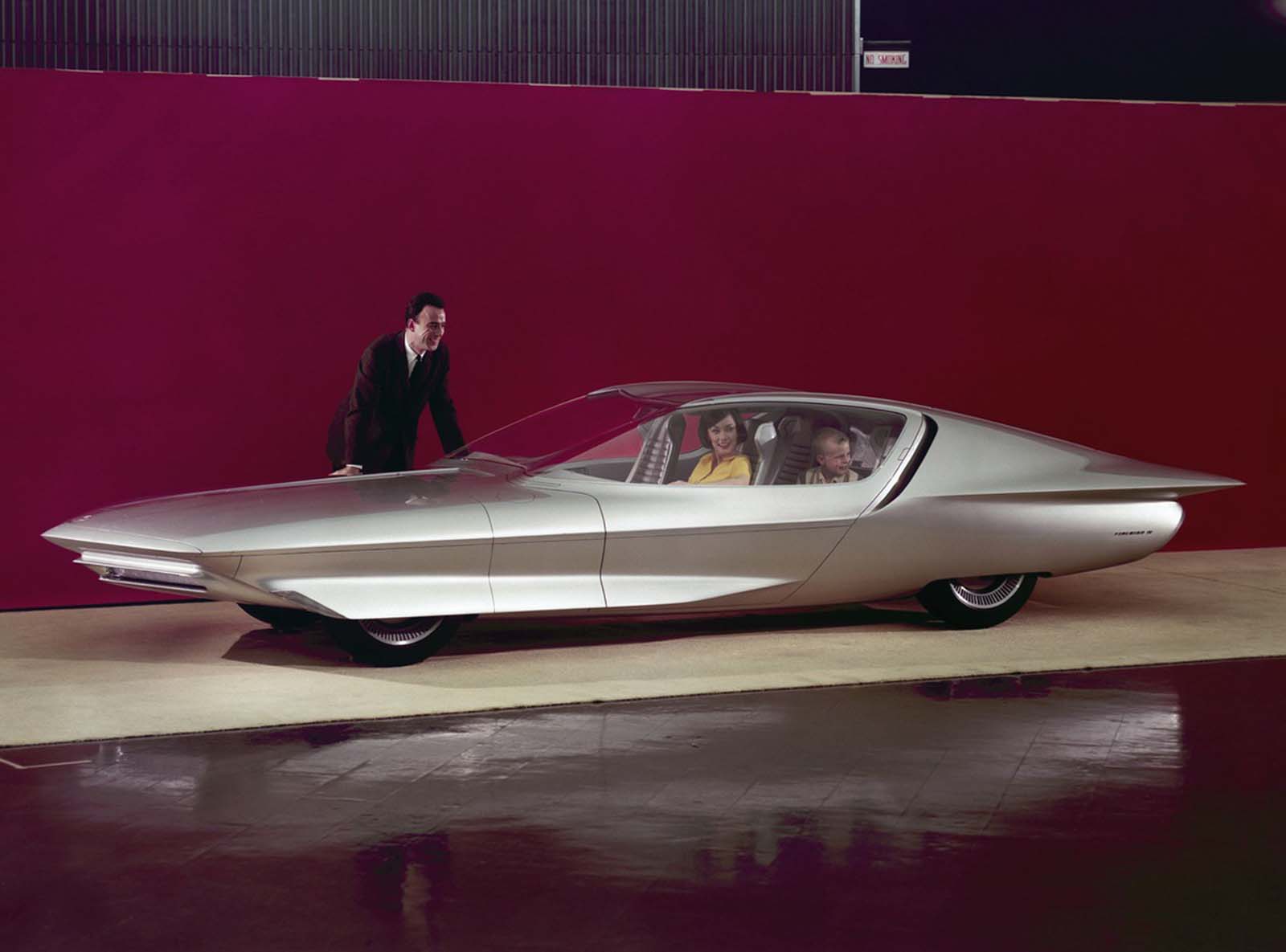
A car of the future on display at the General Motors Pavilion.
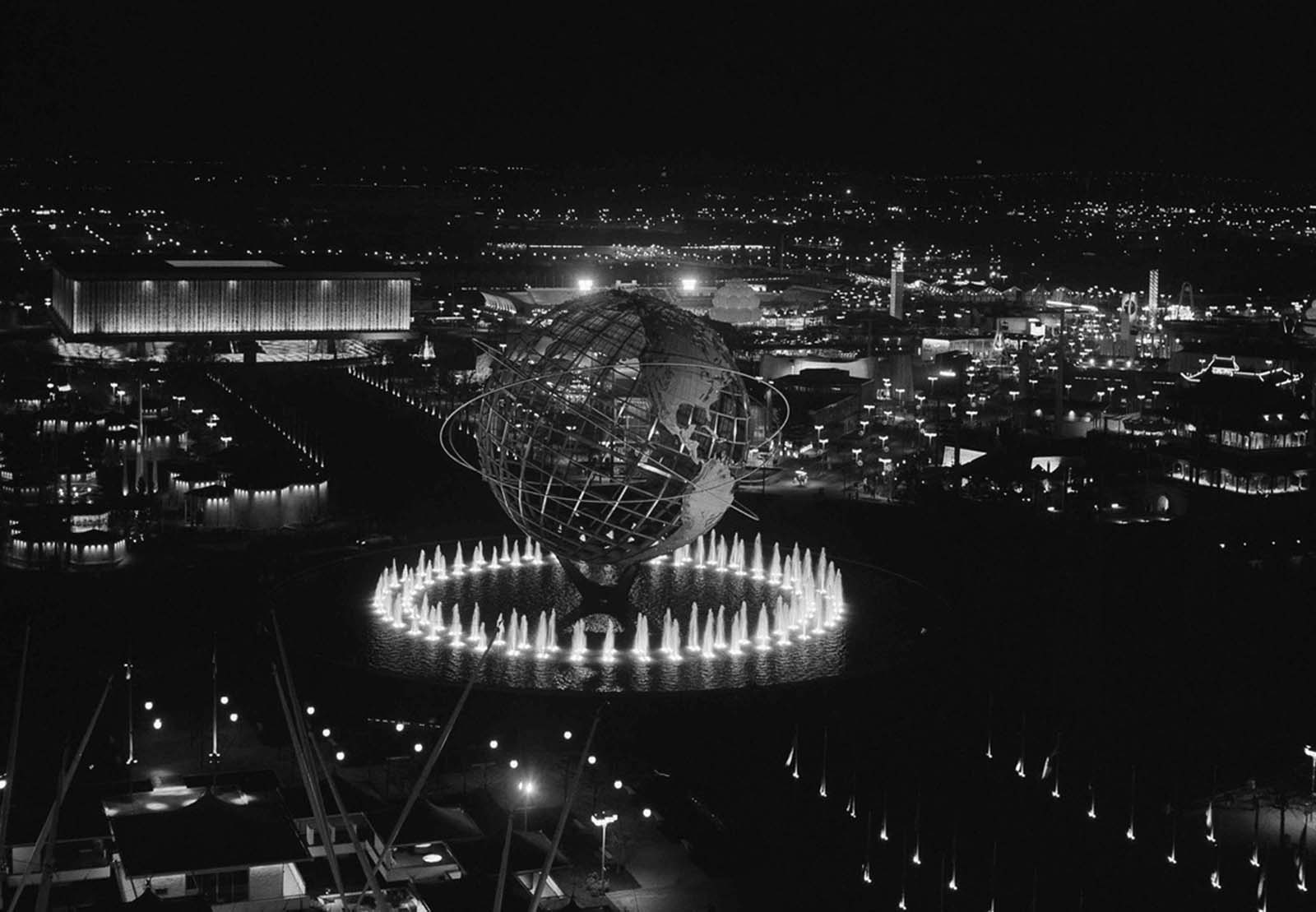
A night view of the New York World’s Fair, on April 27, 1964.
Thanks you for viewing the articles, please like and share to your family !



